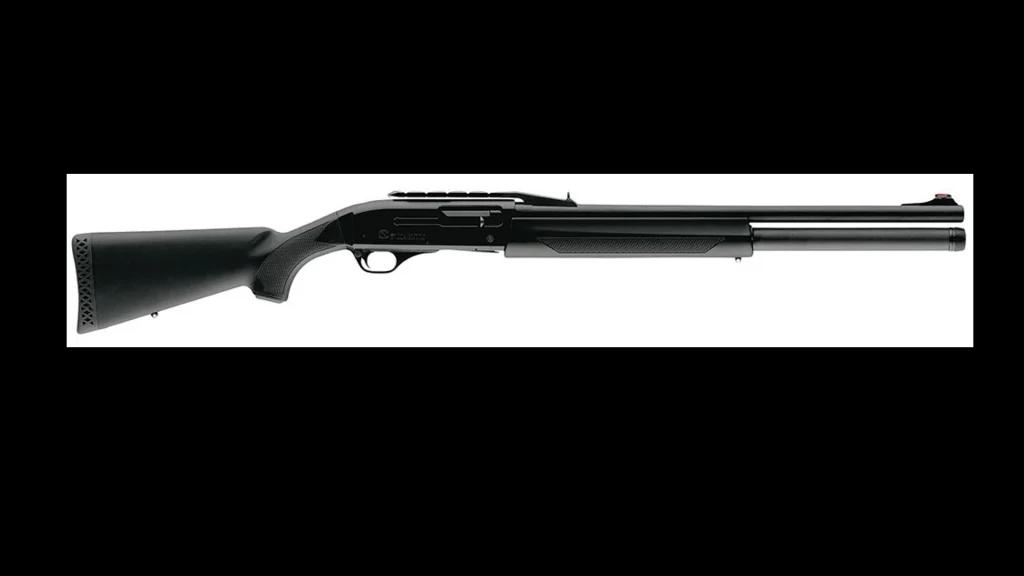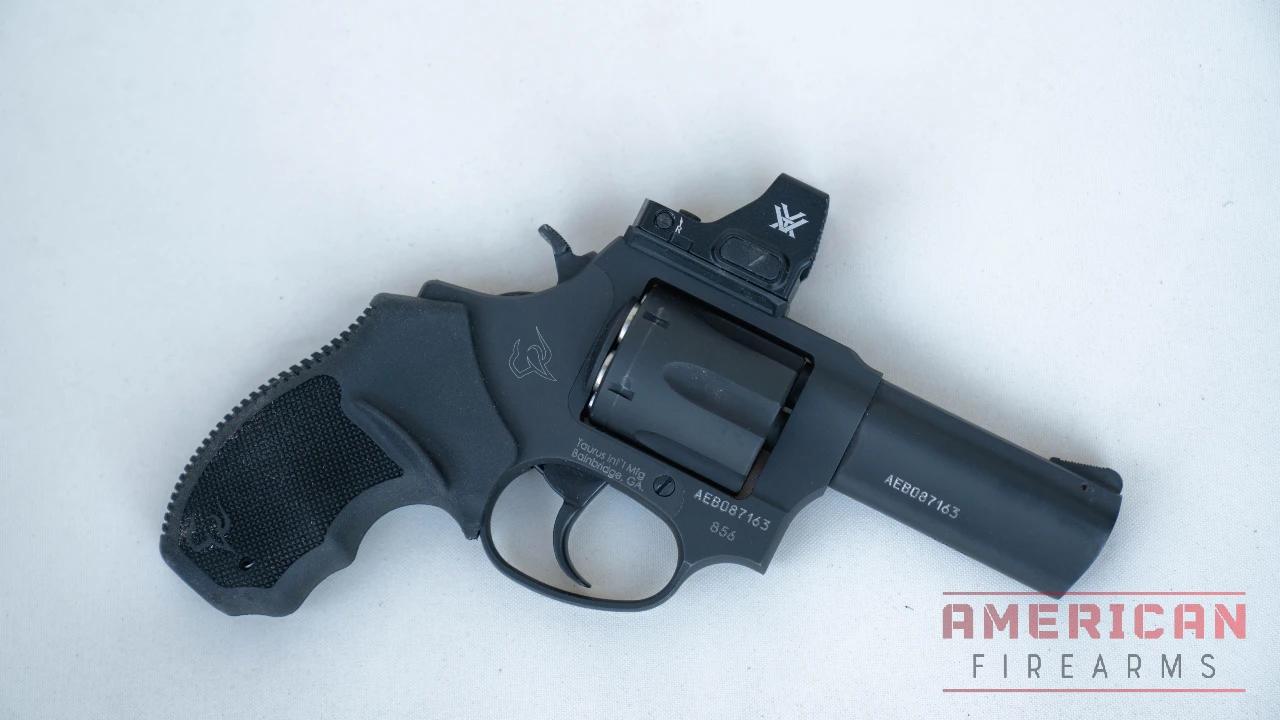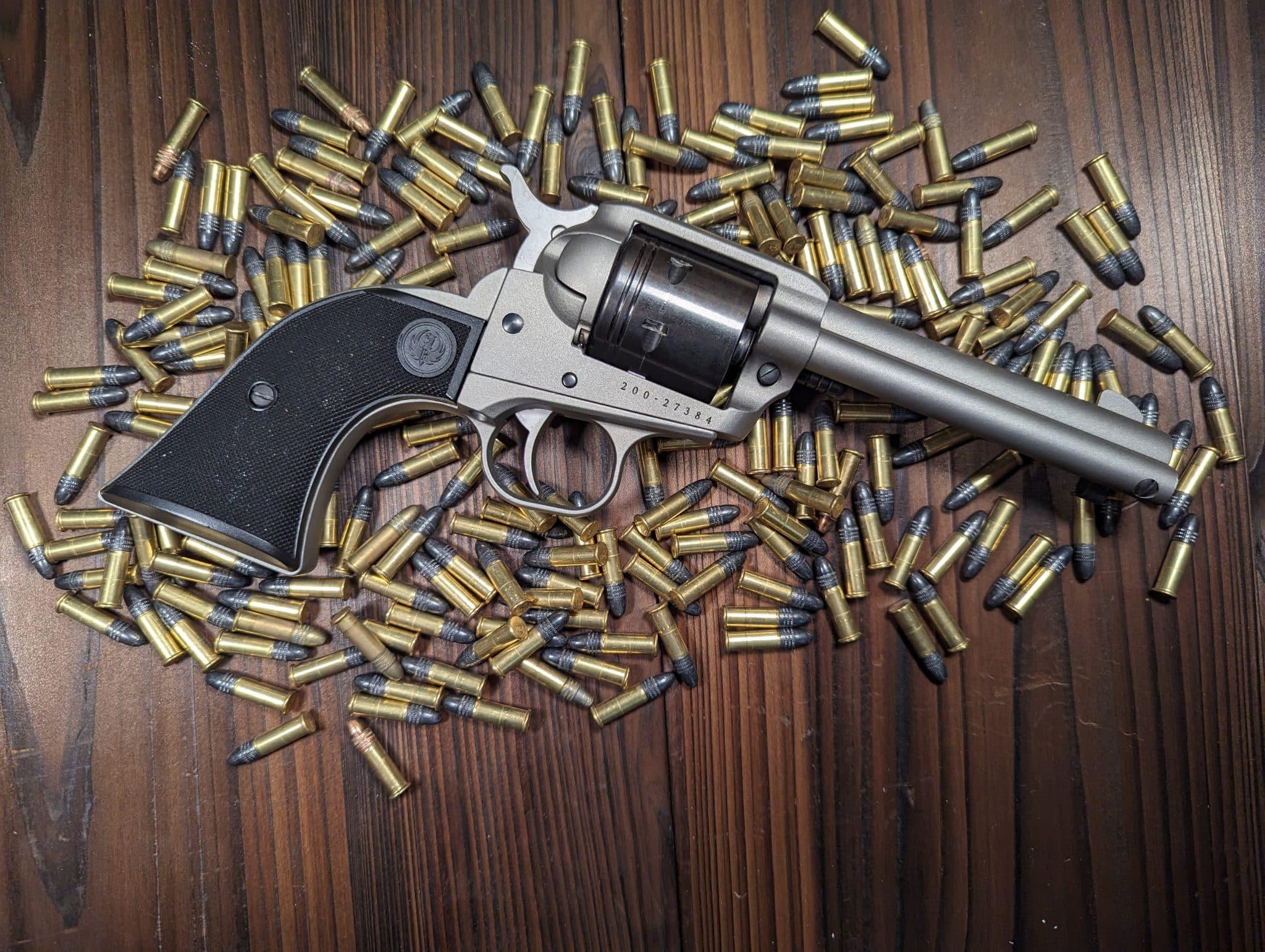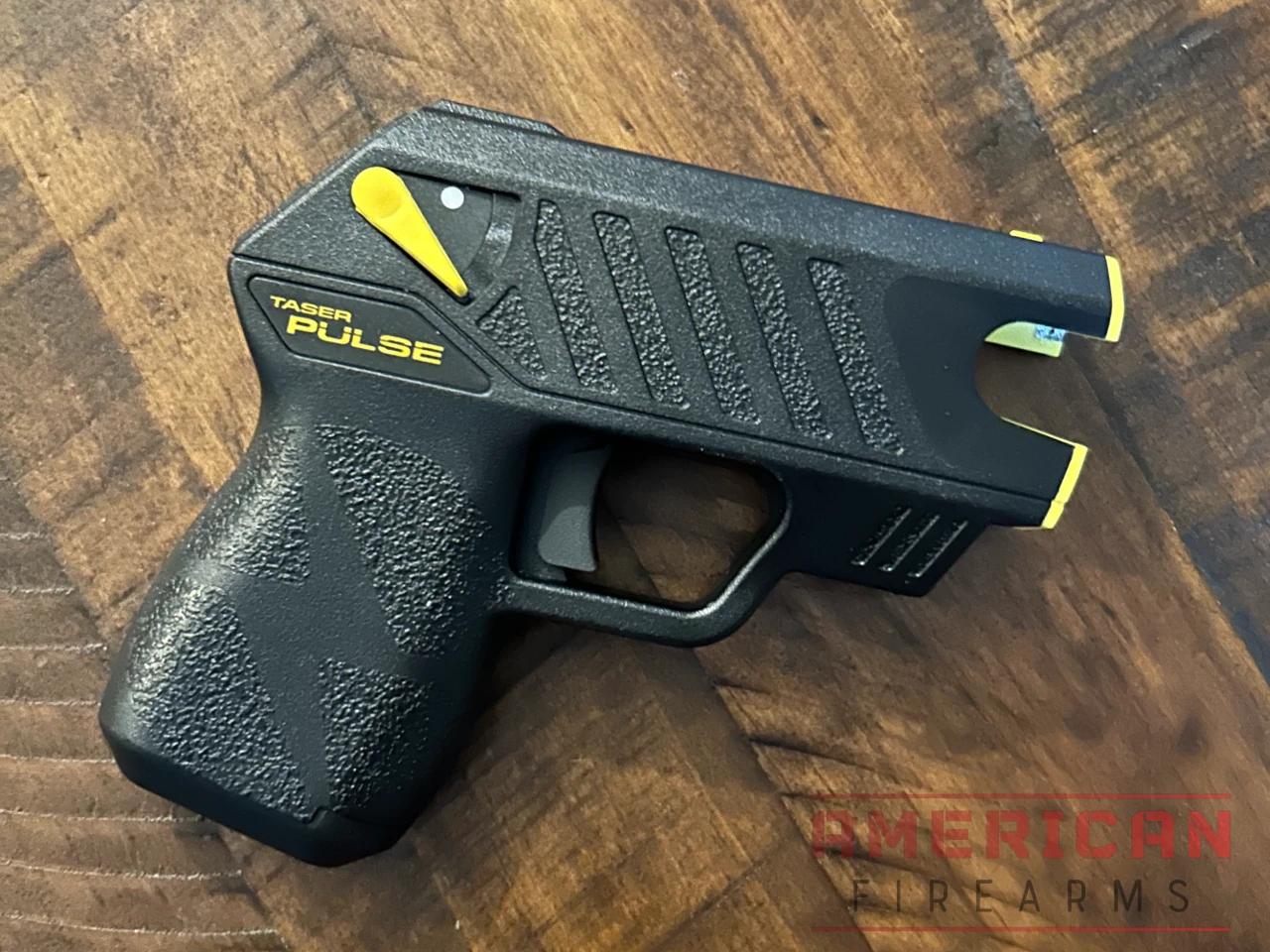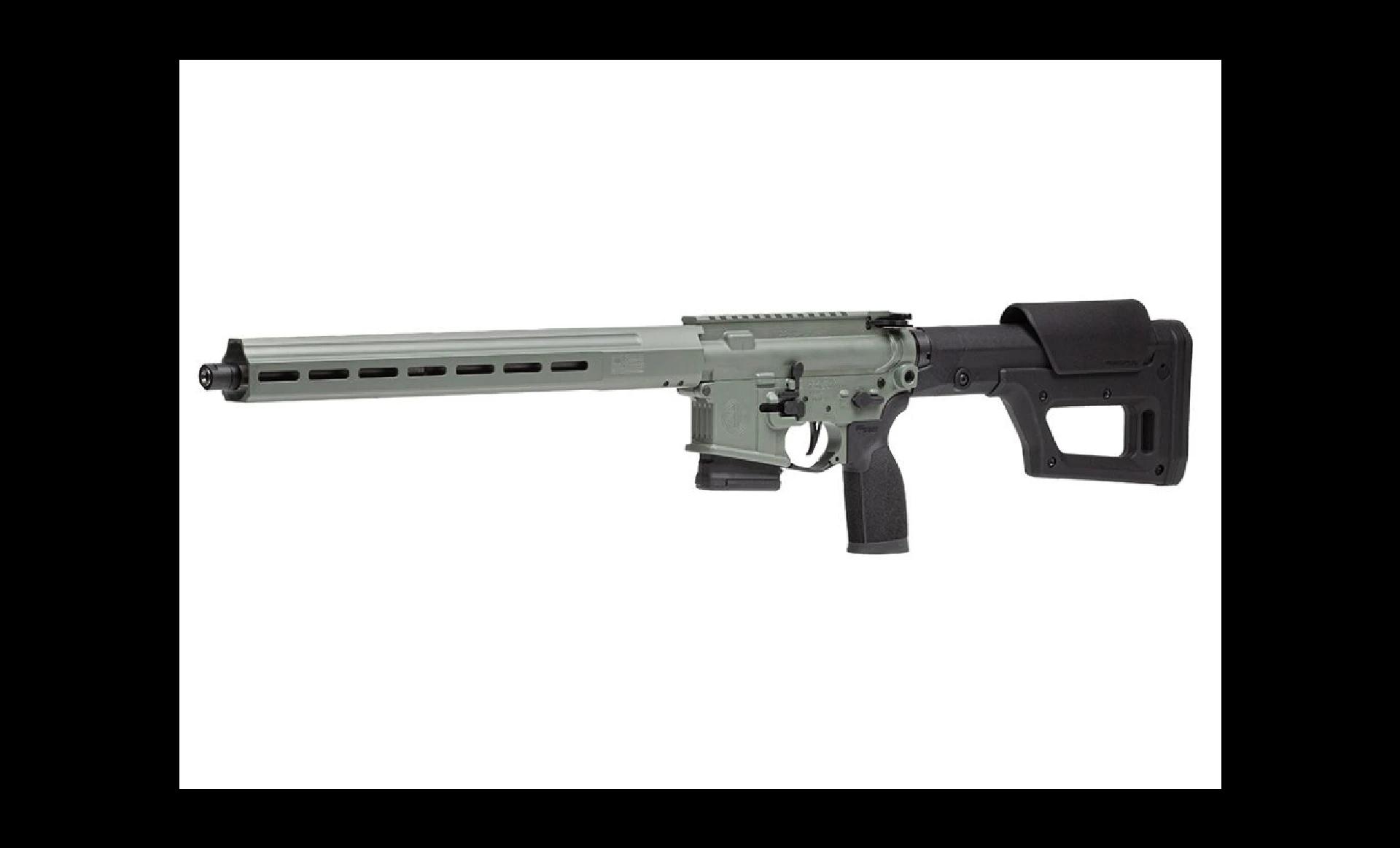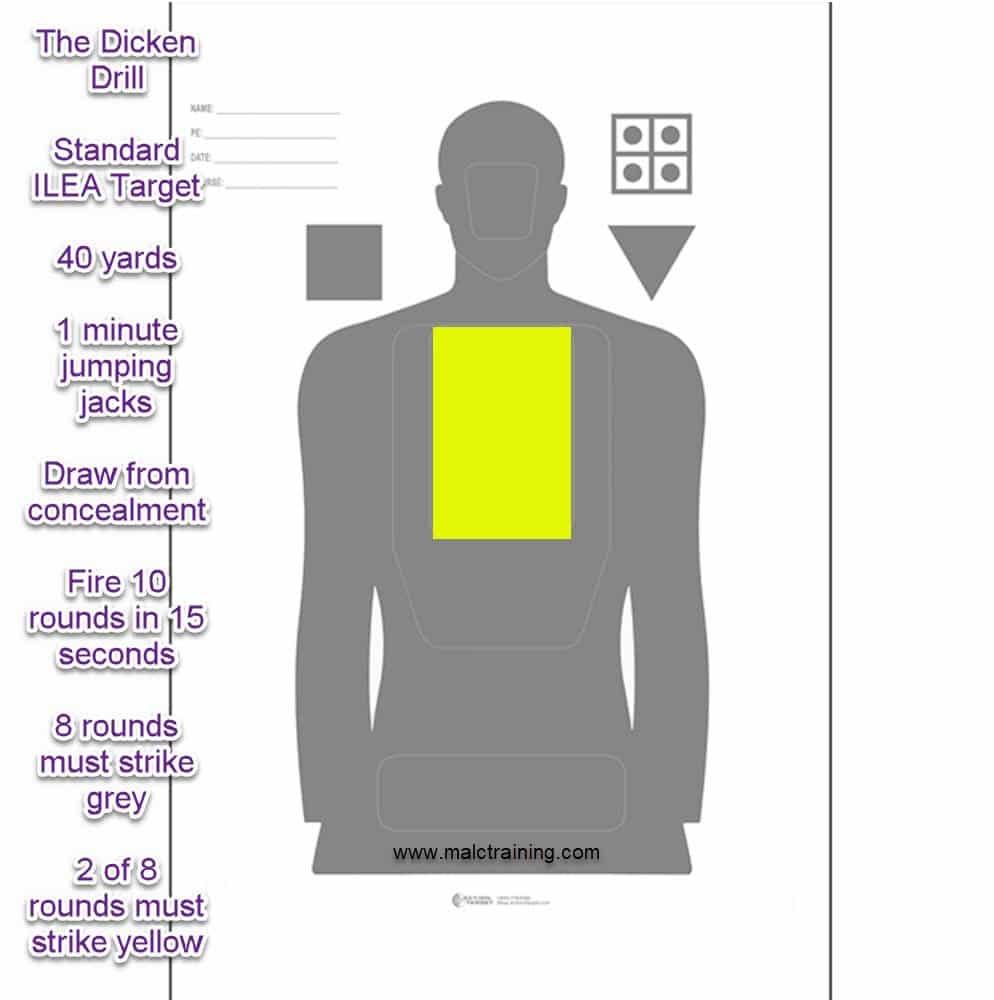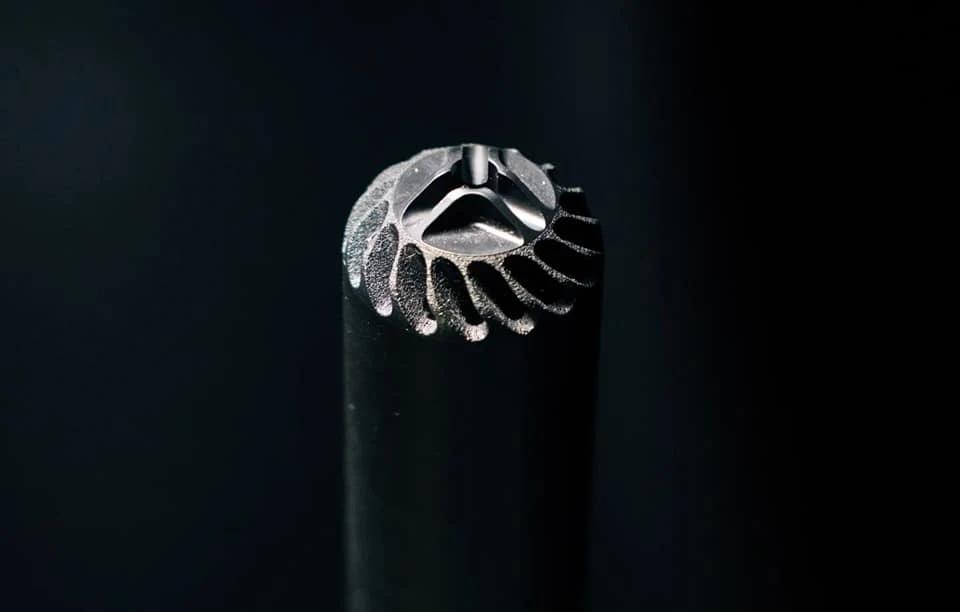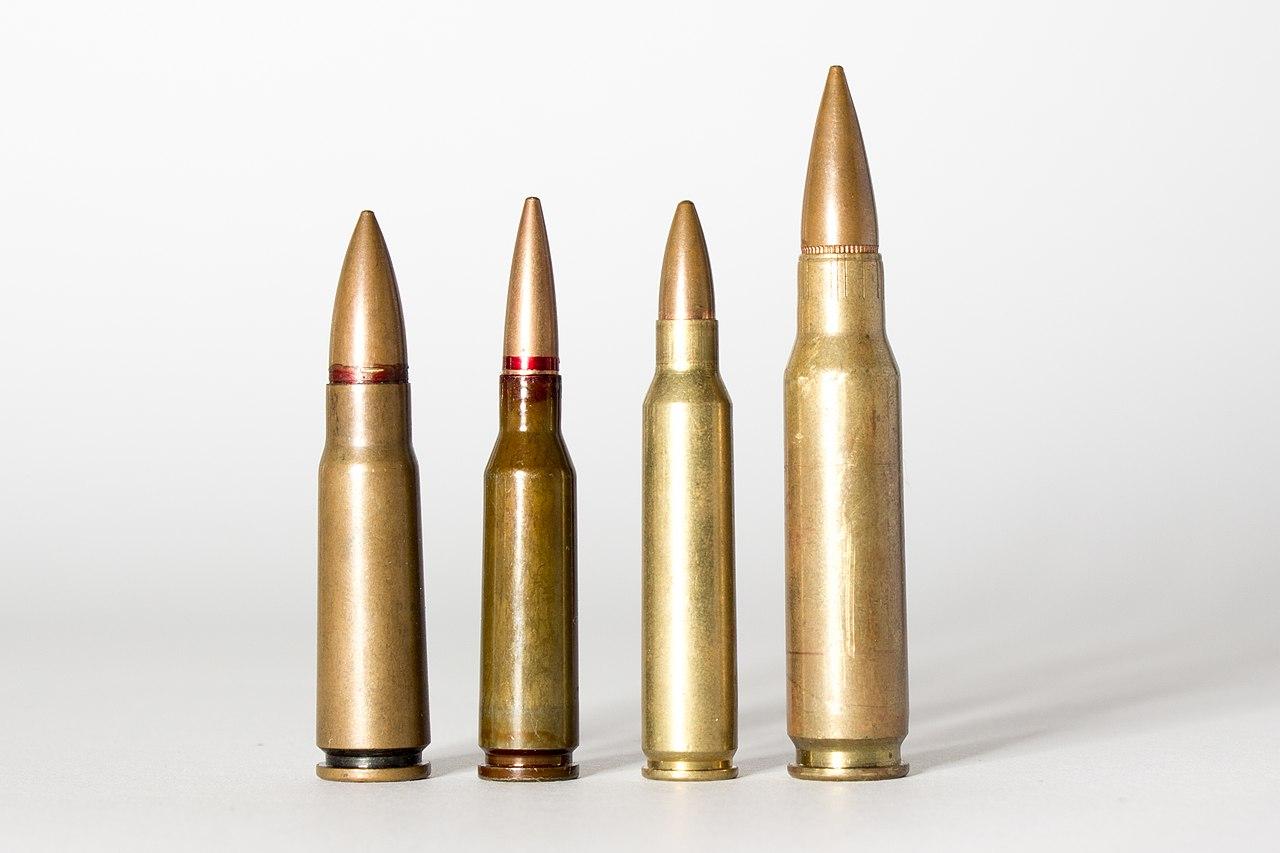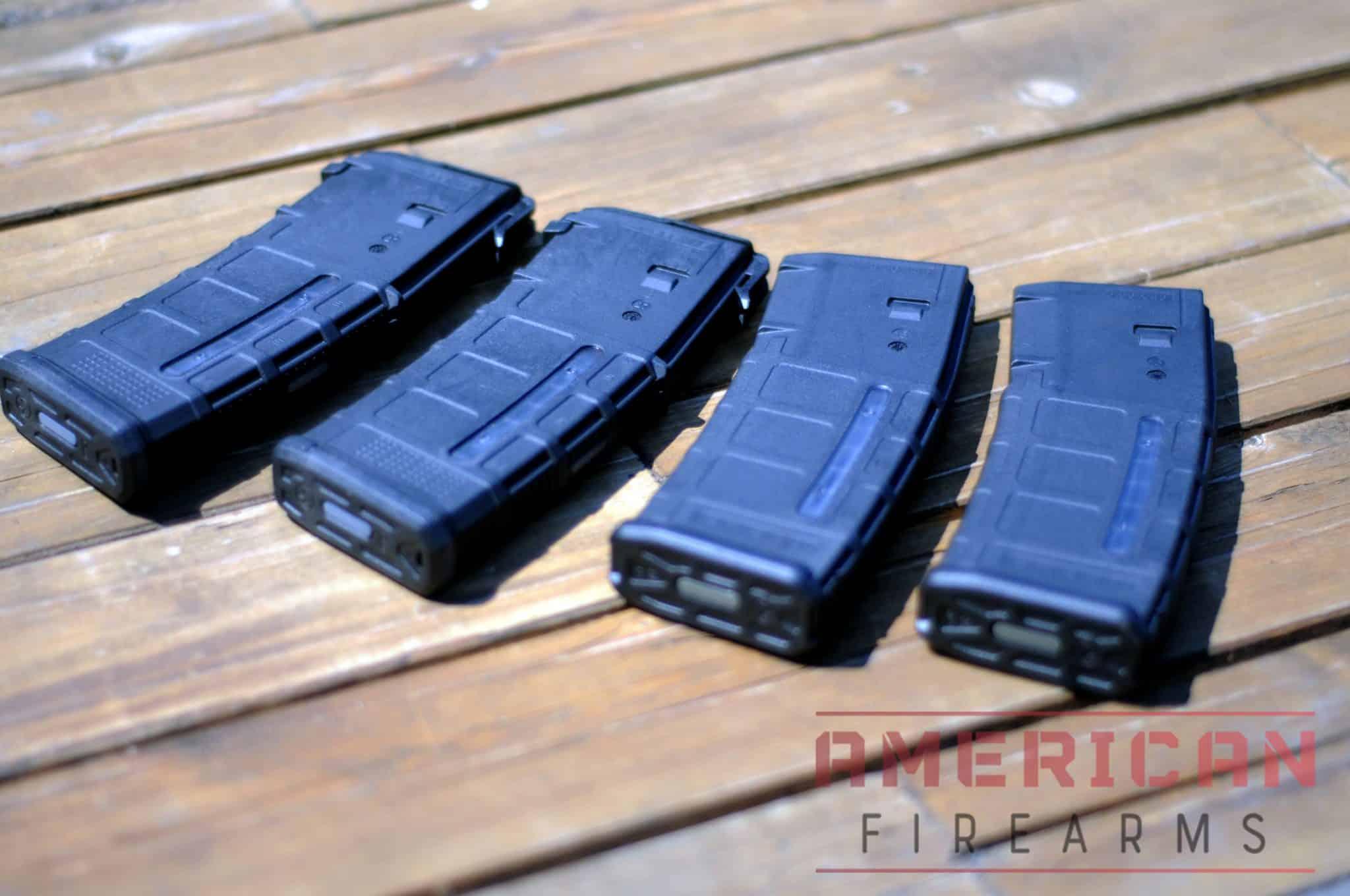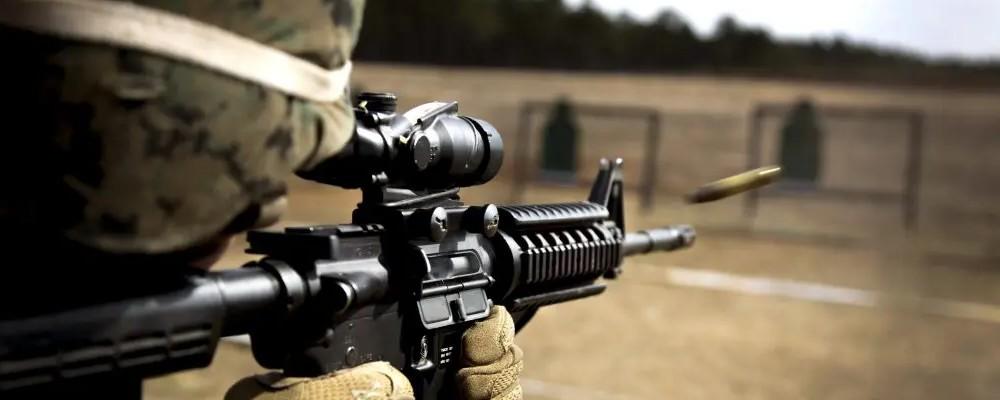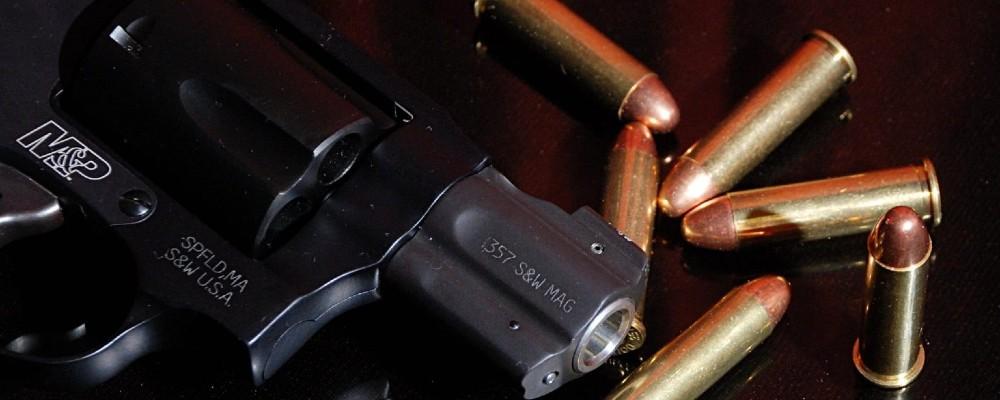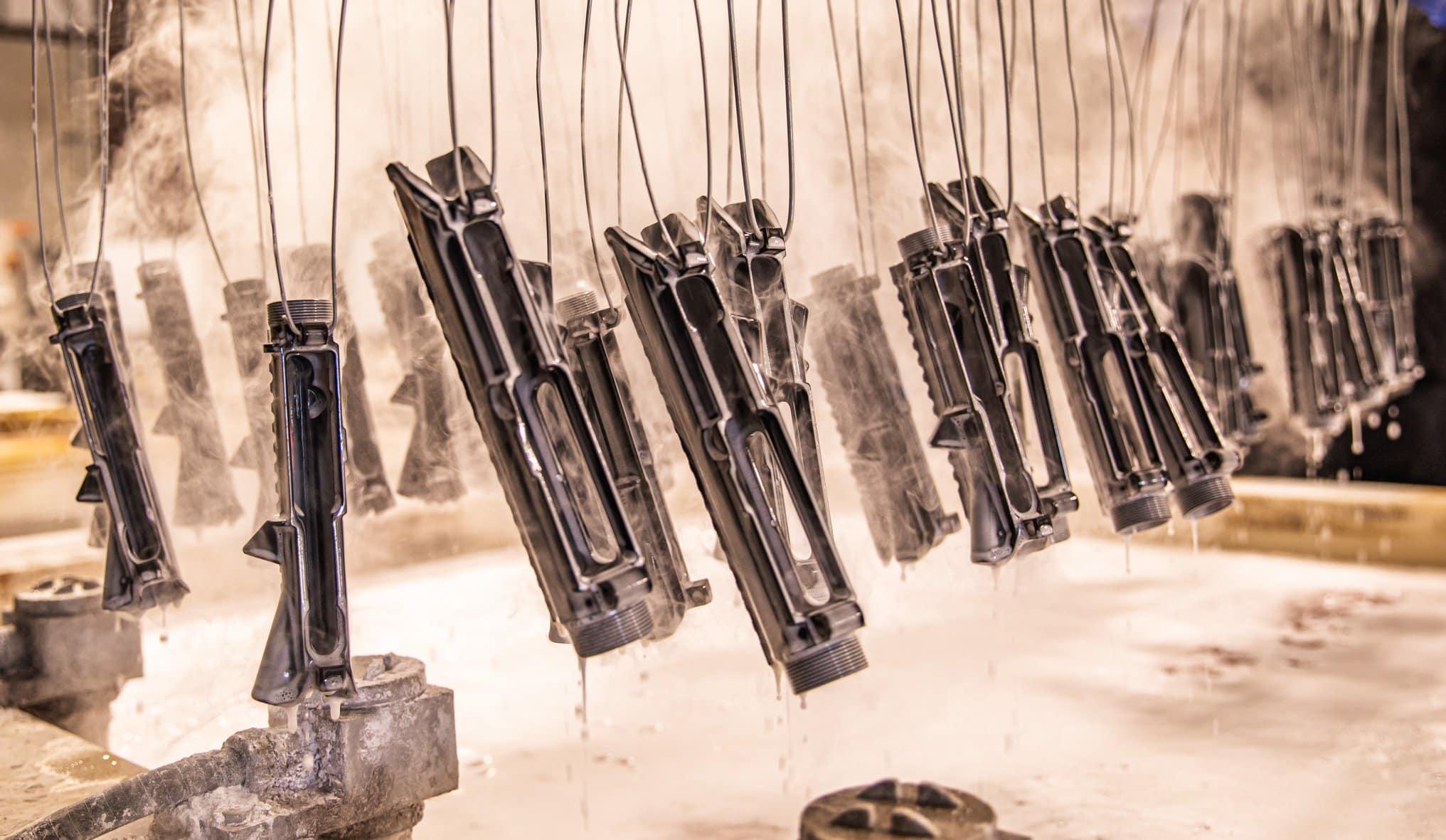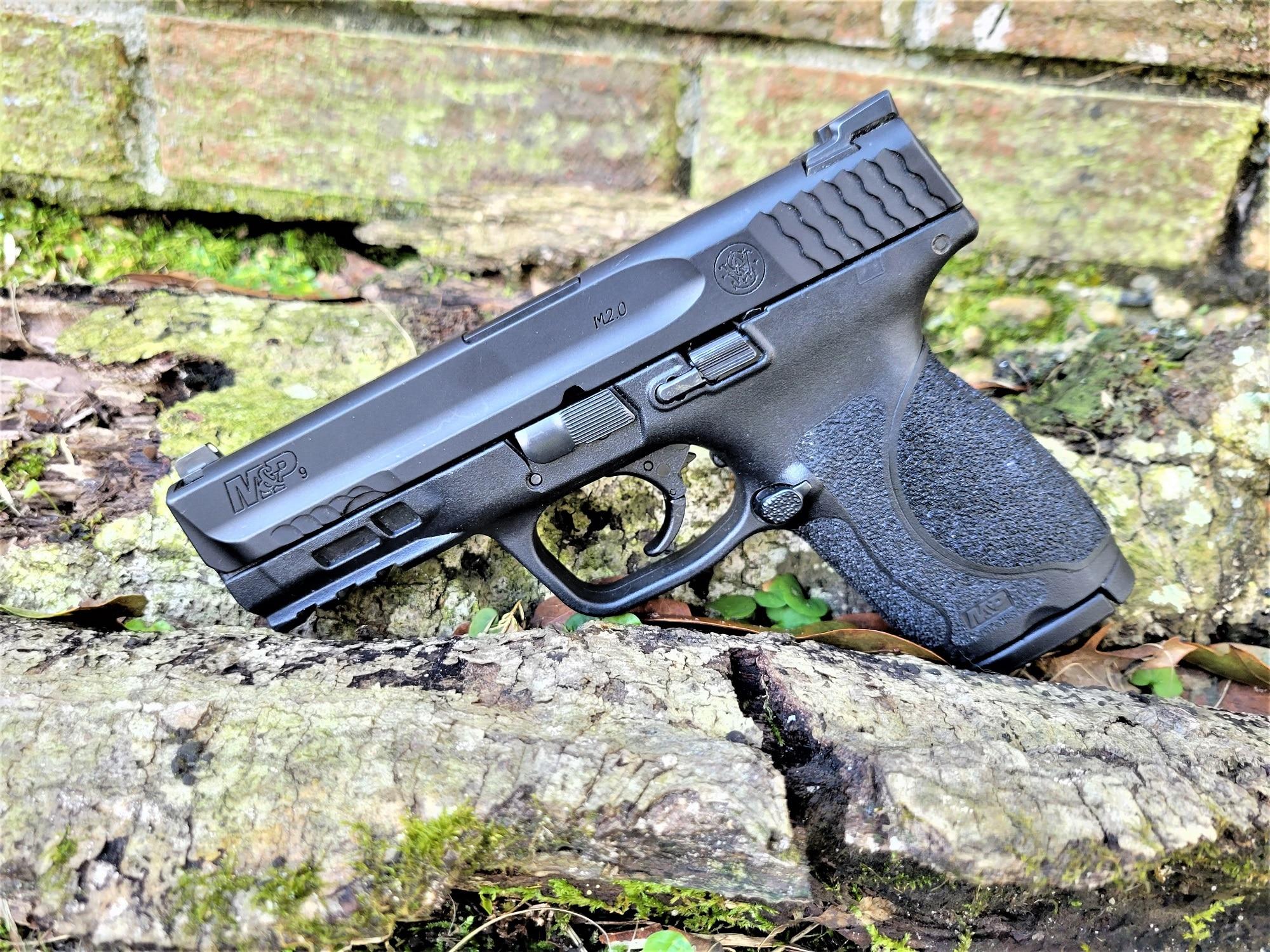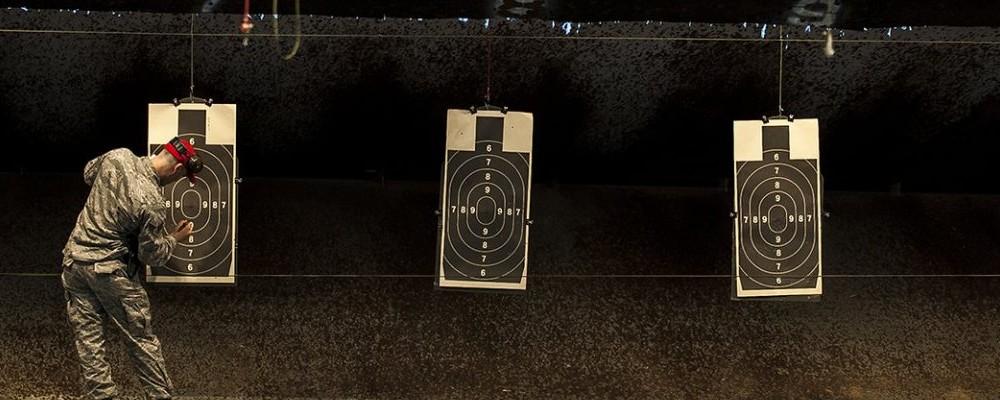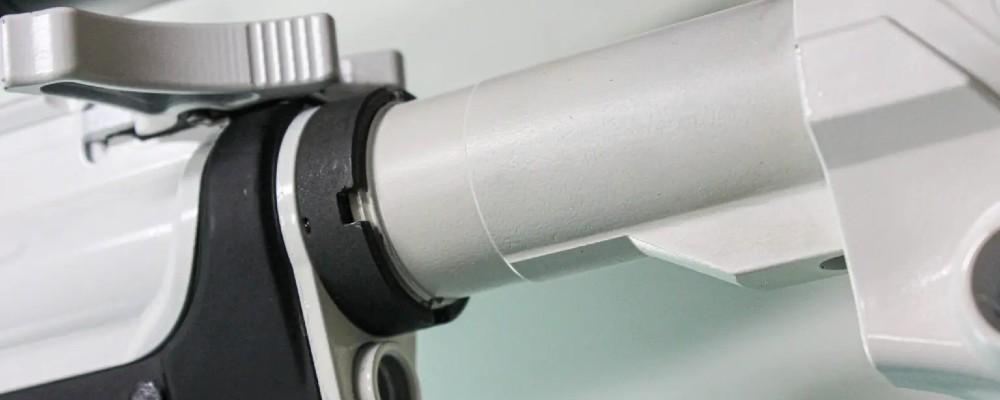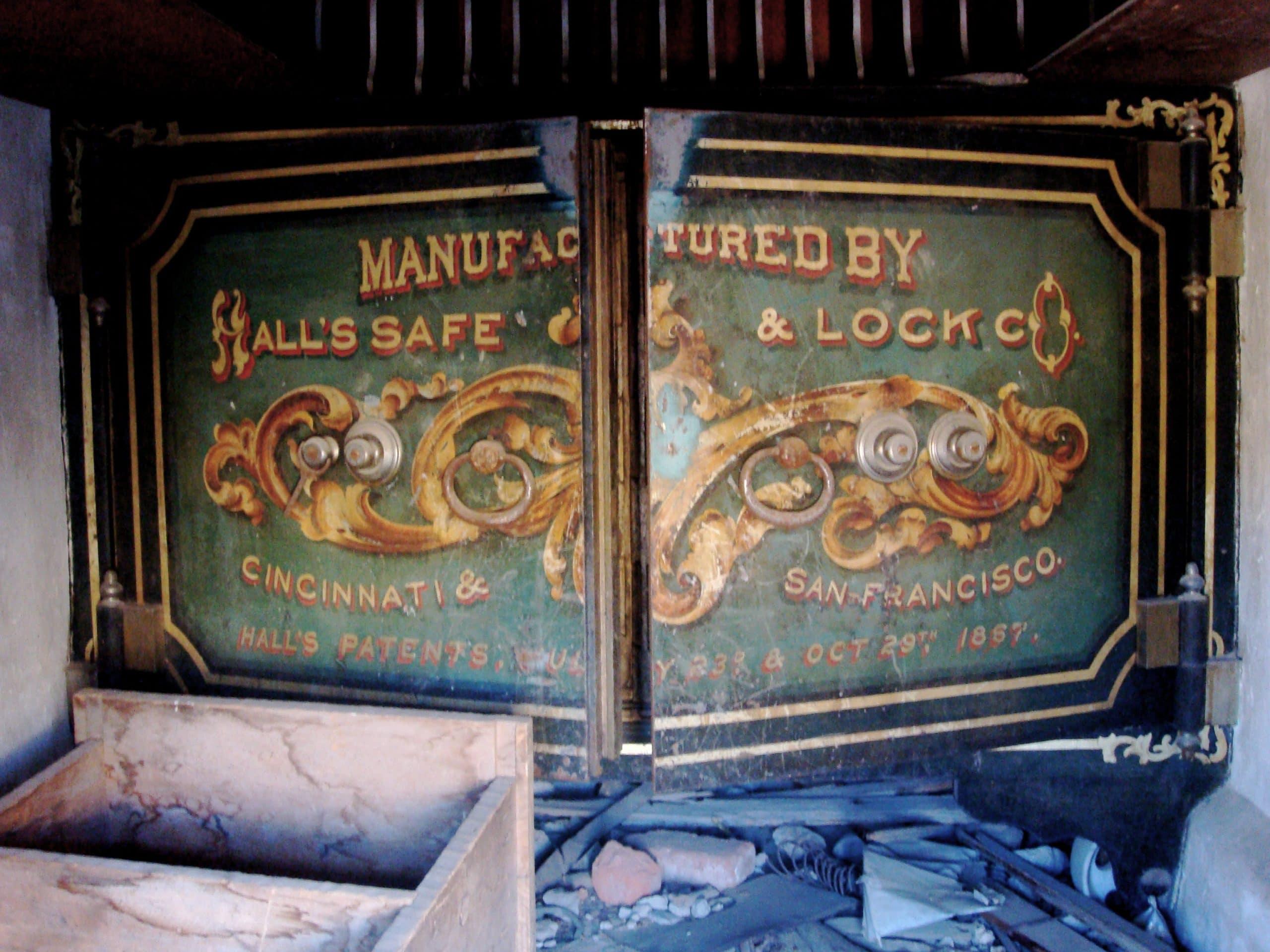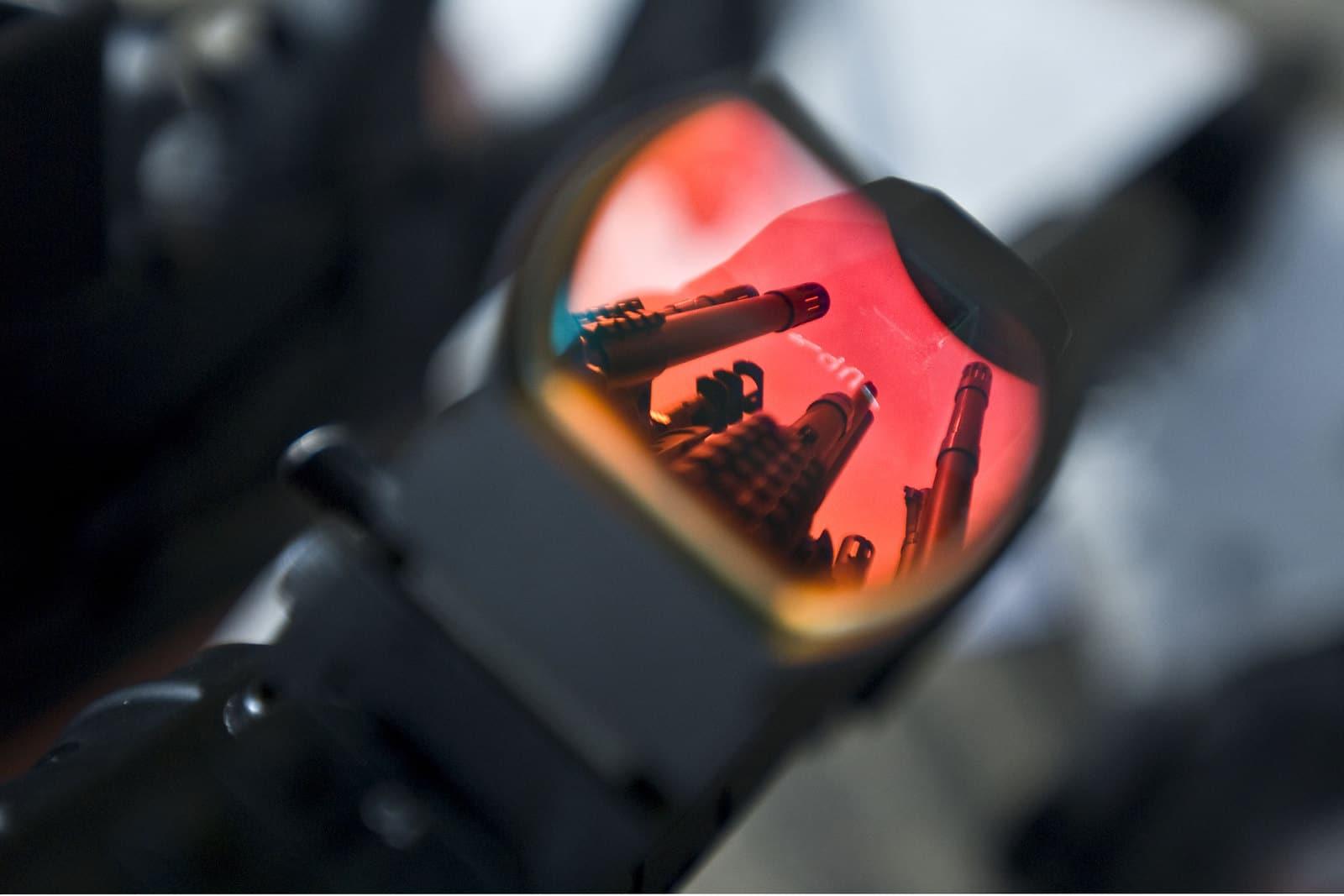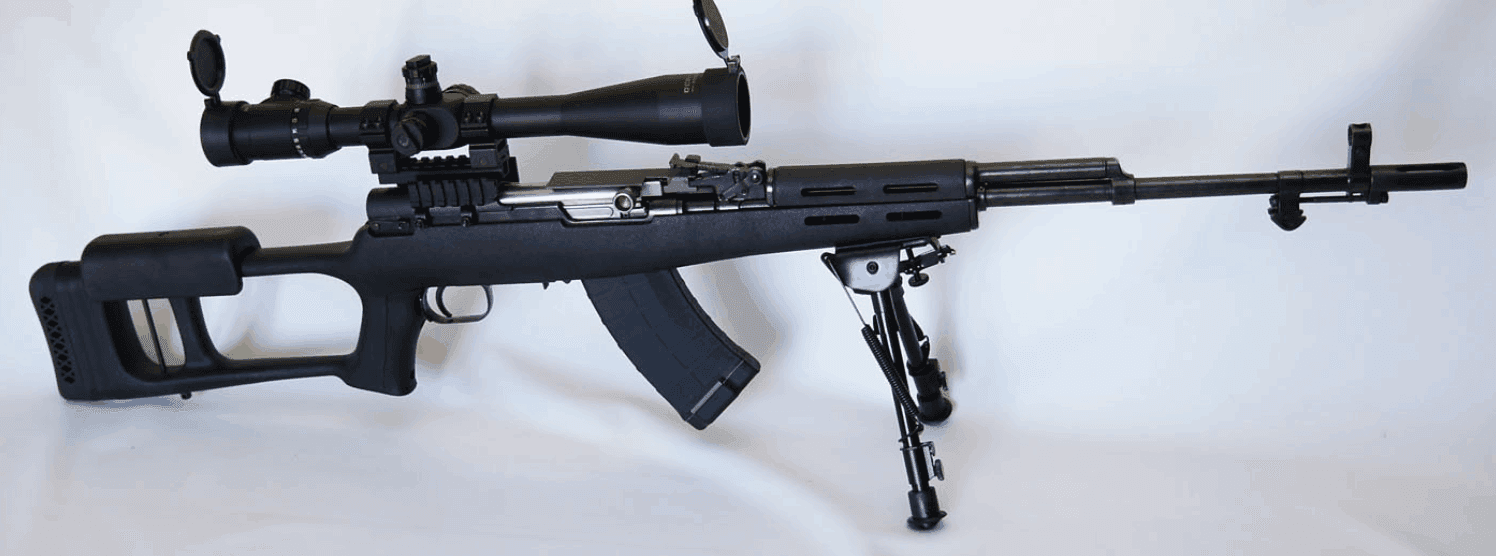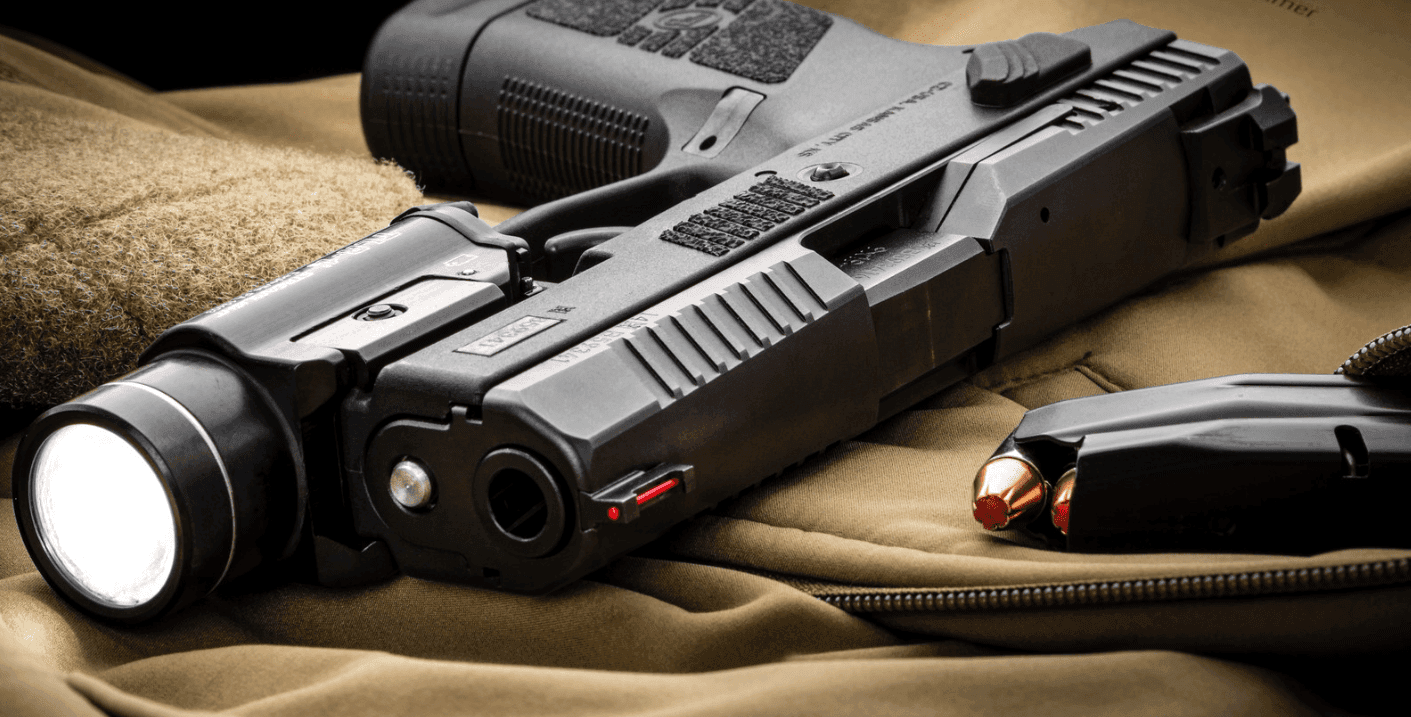Best Tactical Shotguns: Stay Ready
Written By
Michael Crites
Licensed Concealed Carry Holder
Reviewed by
Editorial Team
Learn About The Editorial Team
Share:
Products are selected by our editors. We may earn a commission on purchases from a link. How we select gear.
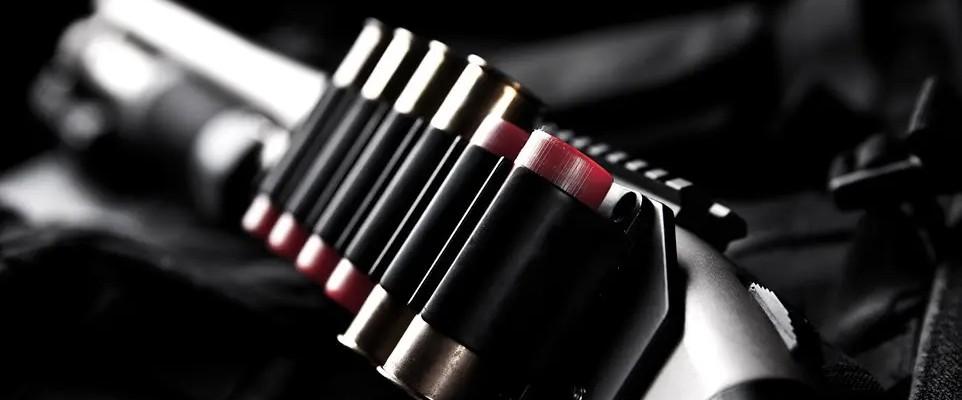
Updated
Oct 2025
Picking the ideal tactical shotgun doesn’t have to be hard. Simply follow a few steps to cut through the bluster and propaganda to find something that really works. Let’s dive in!
In This Article
Tactical Shotgun Comparison
Below is my list of the best tactical shotguns for home defense. I list the best choices in terms of value, performance, reliability, and cost.
Click on the name to head to the product page, read reviews and check prices or skip ahead to the list of shotguns.
| Name | Selection | Price |
|---|---|---|
Best Overall | $529 | |
Premium Pick | $1,999 | |
Best Value | $399 | |
Fastest Firing | $699 | |
Competition Pick | $1,299 | |
Budget Option | $239 | |
Also Great | $499 | |
Best Tactical "Firearm" | $429 |
Tactical Shotgun Reviews
1. Best Overall: Mossberg M590 Tactical
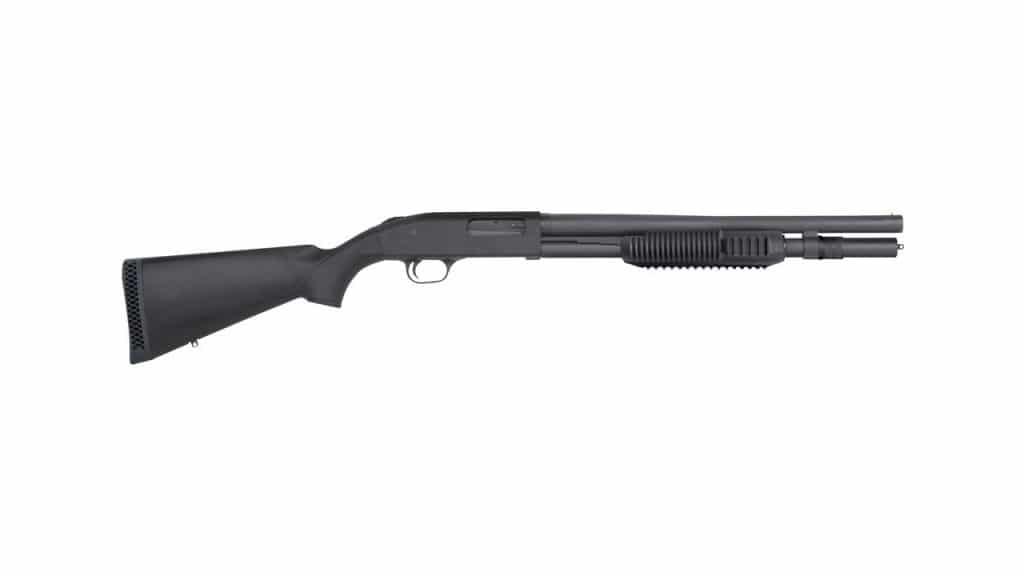

27
AVERAGE
2026 Awards & Rankings
Performance Scores
The Good
- Possibly the perfect tactical pump-action shotgun
- Almost impossible to kill– we have tried
- One of the most proven shotguns of all time
- Developed to meet demanding military testing
- Features enhancements over the standard Mossberg 500.
The Bad
- The heat shield and bayonet lug add weight without offering a corresponding improvement in performance – although they do look cool.
- Advancements in semi-auto shotgun technology mean that the choice between the two is less about reliability and more about individual preferences.
Specs
- Caliber: 12 gauge (also available in assorted variants in 20 gauge and .410)
- Barrel Length: 20 inches
- Overall Length: 41 inches
- Weight: 7.75 pounds, unloaded
By enhancing the company’s highly successful Model 500 series action to make it extremely durable, the Mossberg 590A1 becomes the shotgun equivalent of a dump truck.
One of the best tactical shotguns ever made, the Mossberg 590 has stood the test of time and is a favorite of military and law enforcement.
History
Mossberg introduced the Model 500 pump-action shotgun in 1961. Although it’s a great gun, it couldn’t pass a military selection test in the early 1980s, which aimed to replace some of Uncle Sam’s older combat scatterguns from World War II and Vietnam.
Beefing up the design, Mossberg introduced the improved Model 590 in 1987 and it proved a hit.
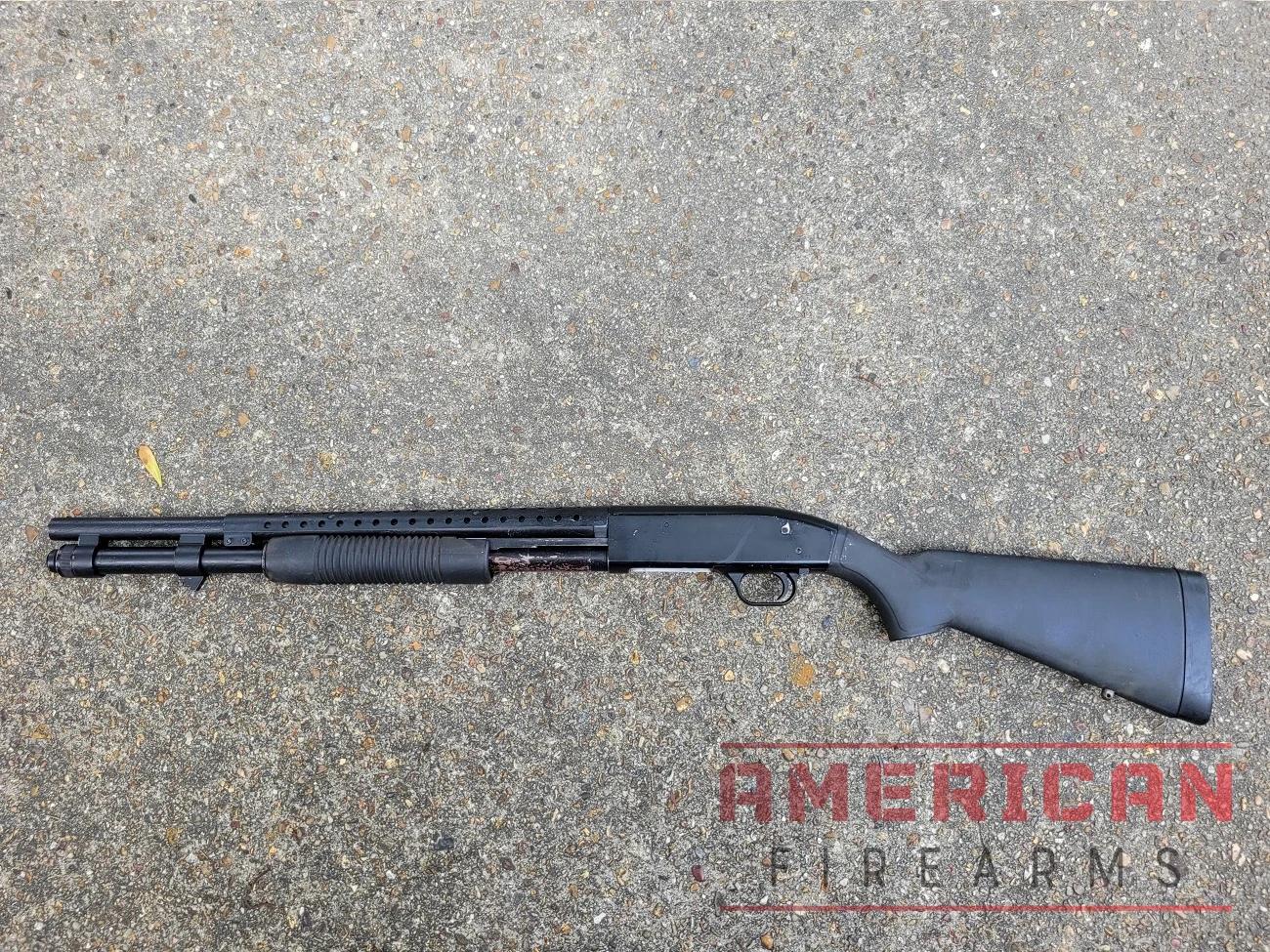
Durable, easy to maintain, and hard to kill, it passed the Army’s Mil-Spec 3443E test, which required trial guns to digest 3,000 rounds of full-power buckshot without fail.
Although they are a bit more expensive than comparable Mossberg 500 security and home defense shotguns due to their heavy walls and use of a metal trigger guard (as opposed to the commonly used plastic ones), the M590A1 remains more affordable than a high-quality semi-auto tactical gun.
Sporting a parkerized finish rather than more commercial blued finishes, they are not pretty, but they are pretty effective.
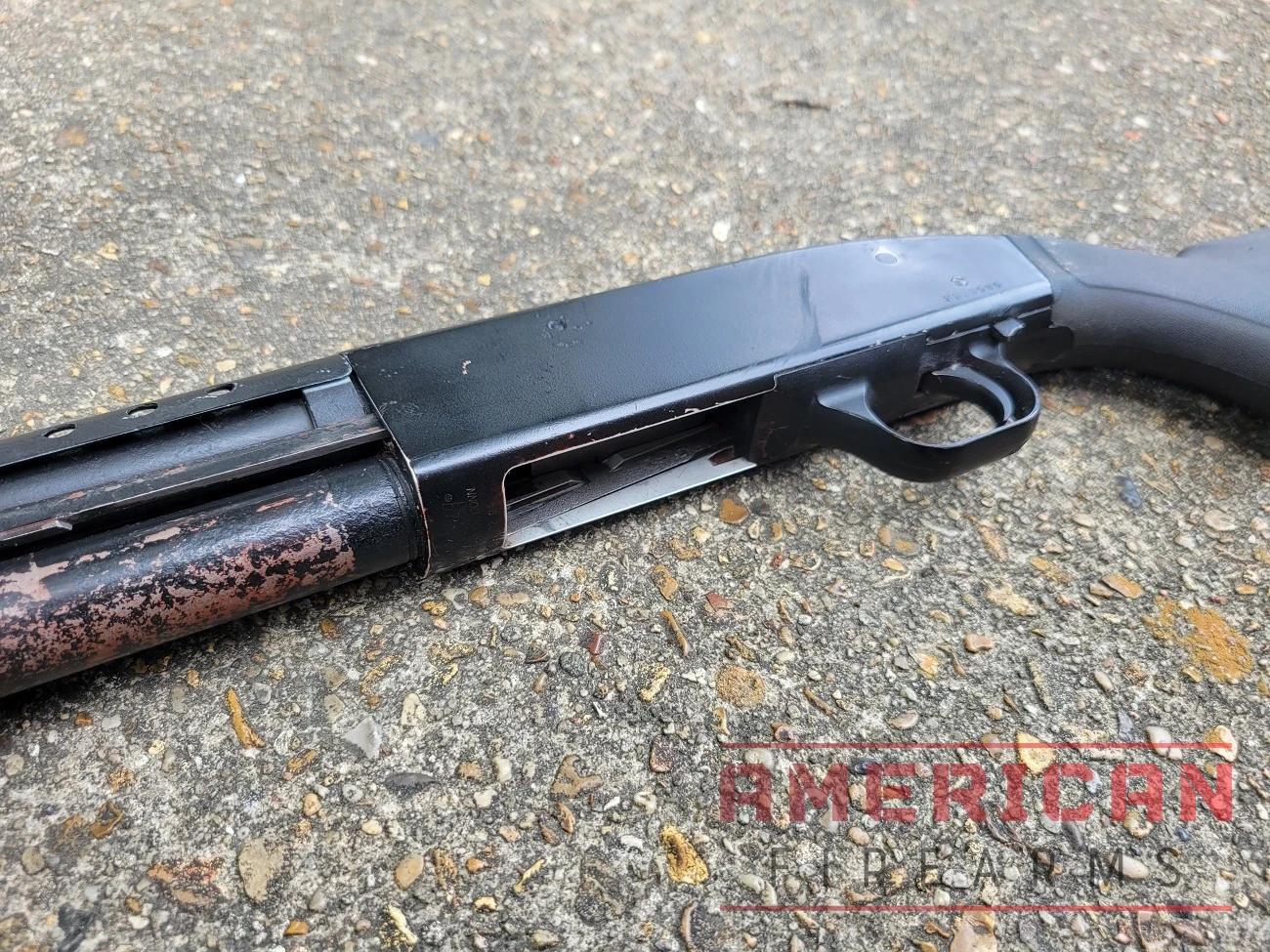
Features
Very similar to the outrageously popular Mossy 500, the original Mossberg 590 when introduced had a thicker heavy wall receiver and cylinder bore barrel (no choke tubes here) and used a metal alloy trigger guard. It also carried a heat shield and bayonet lug along with a matte parkerized finish.
This standard model has been tweaked over the past 35 years, but Mossberg still offers what is essentially the same gun as the 590 9-shot (#50694), which still has almost all of these same features including a 20-inch barrel and an 8+1 shell capacity.
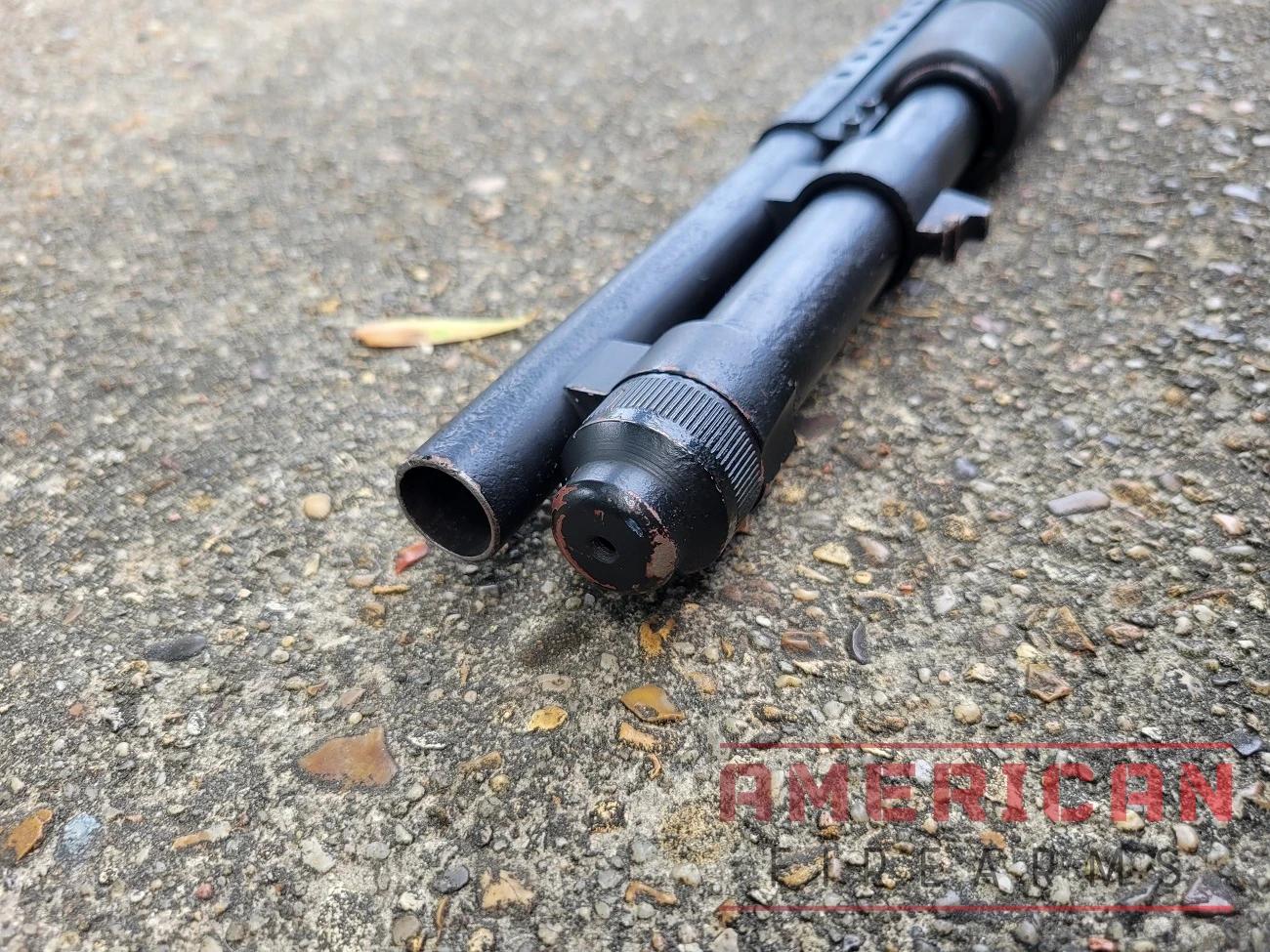
Controls
Like a Mossberg 500, the 590 has simple and effective ambi controls including a tang-mounted safety on the top of the receiver a centerline pump action, and a slide release to the rear of the trigger guard.
It also has what Mossberg terms as a “clean out” magazine cap system that, besides making it easy to clean the tube without disassembling the whole gun, makes it easy to add a magazine extension to increase capacity.
Ergonomics
The 590, equipped with a 20-inch barrel, heat shield, and full-length stock, is heavy, weighing around 8 pounds without shells, sling, optics, or accessories. Other than that, it feels good in the hand and comes up to the shoulder fast.
For those looking to shave some length and weight, Mossberg sells a conversion kit to adapt from full stock to a 5.75-pound 32.5-inch Cruiser-style pistol grip configuration.
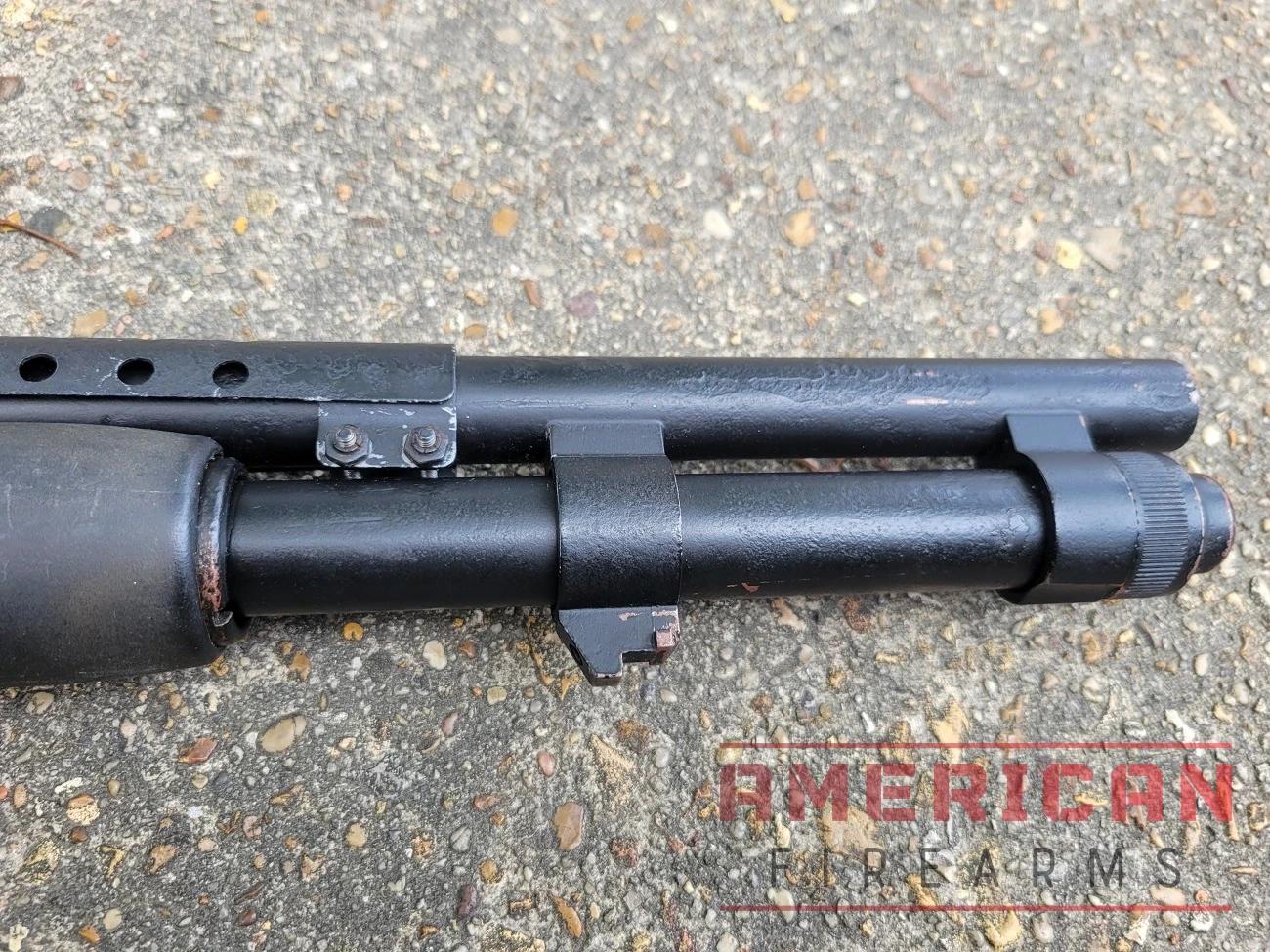
Reliability
We’ve had our M590 since 1999 and, over the past quarter century, have put thousands of shells through the gun, dropped it on concrete several times, and even lost it at a boat ramp for a day.
The shotgun has performed without much complaint and the only parts I have had to replace in that period are an $18 safety switch that broke off and a barrel bead that got lost along the way.
Sights
The standard M590 only comes with a bead front sight that works fine out to 25 yards, but the receiver can add an optics mount or ghost ring rear sight via a drilled and tapped receiver.
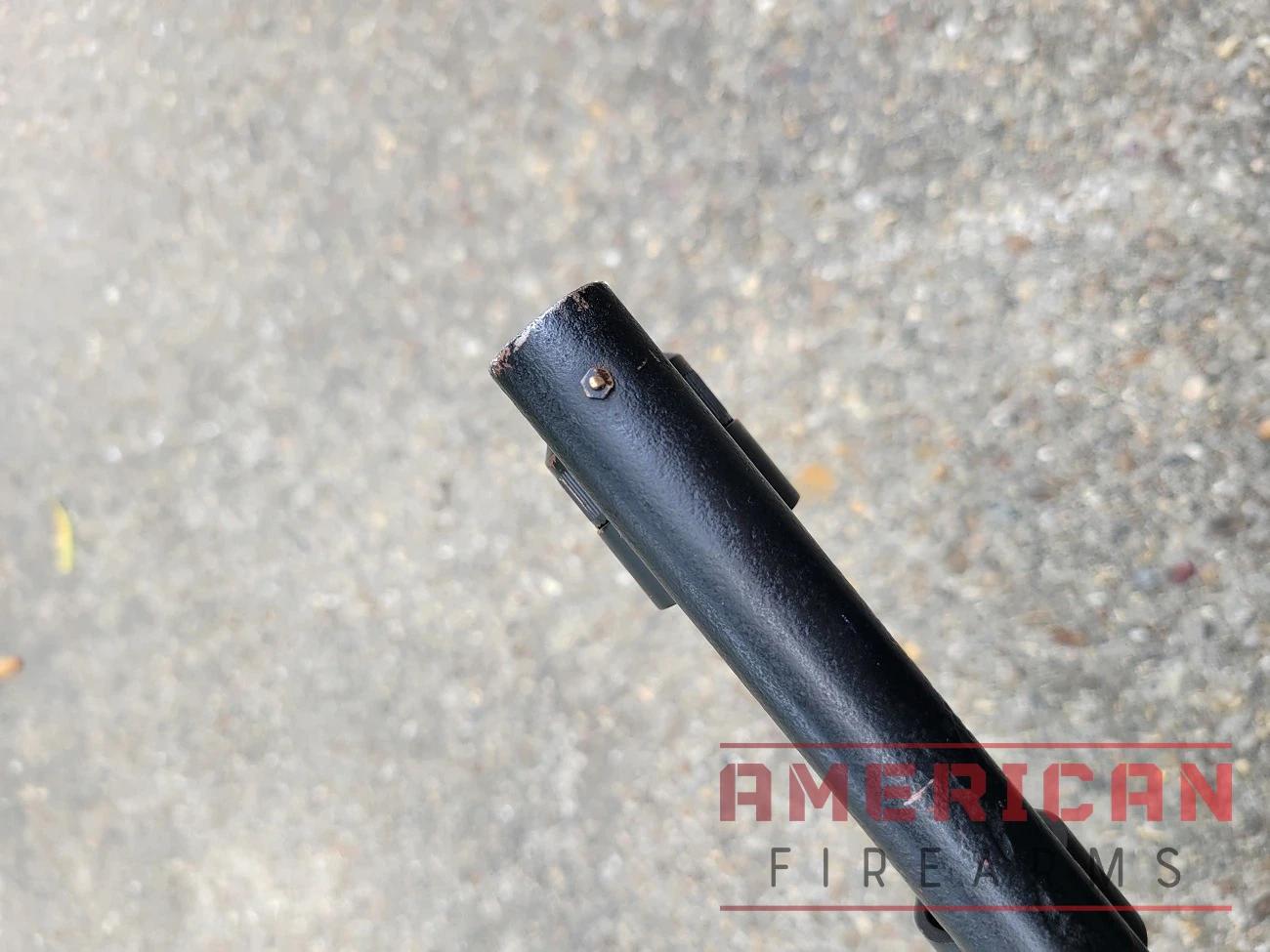
Trigger
The factory set pull weight of a 590 trigger is in the 8.5-pound range but ours, well used over the years, currently breaks at a milder 6 pounds with a noticeably light take-up before hitting the wall. There are aftermarket trigger spring kits available that will drop that down to as low as 4.5 pounds.
Accuracy
I have evaluated the 590 and 500 cylinder bored security model side-by-side and found the 590 is the more accurate of the two models, likely due to the extra barrel length and thickness. With decent buckshot out to 10 yards, the 590 will generally hold a 5-inch pattern while you can say the same thing about 3-4 good quality slugs out to 50 yards.
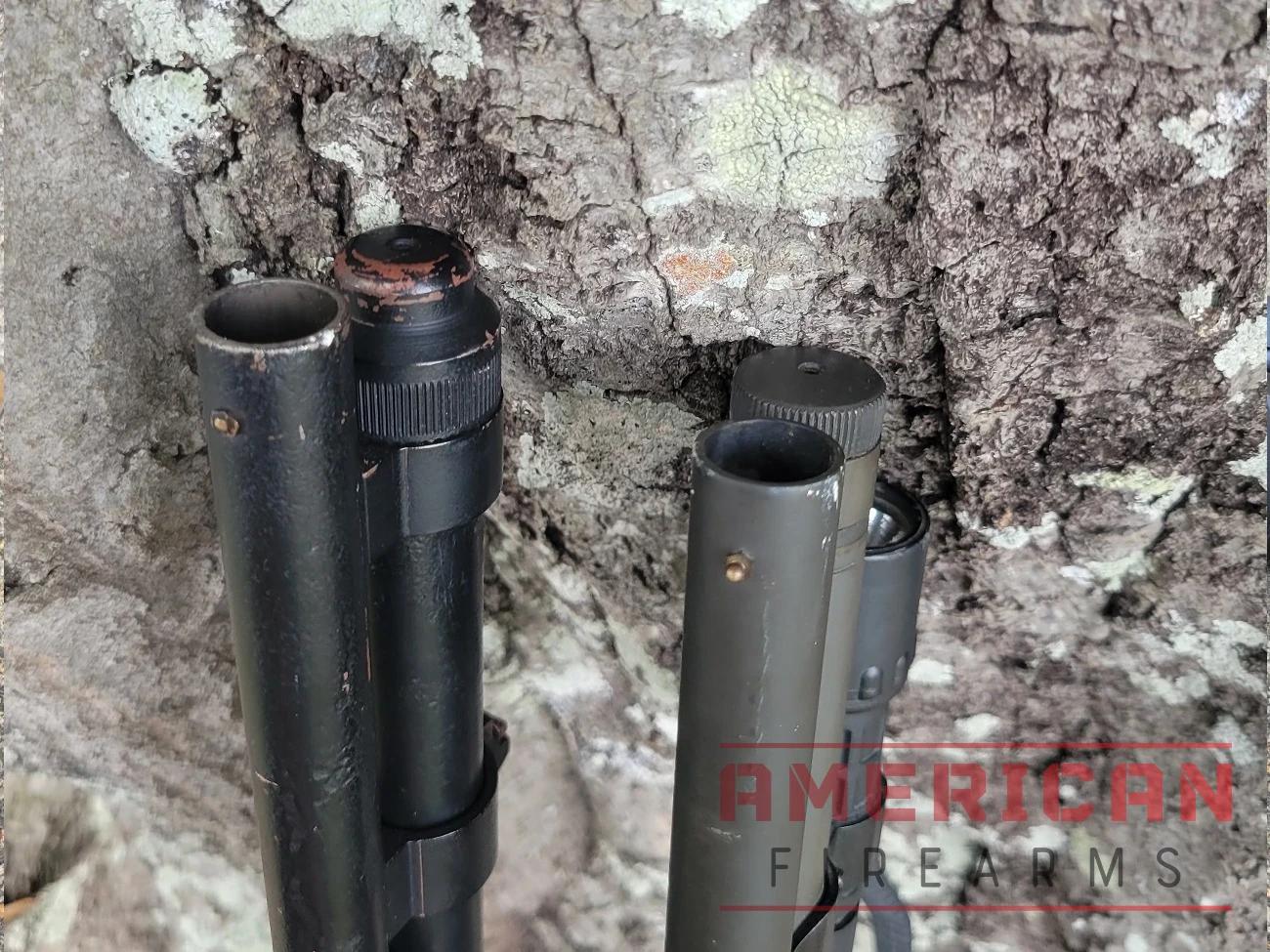
Aftermarket Support
There is no shortage of accessories and replacement parts for the 590 series.
2. Premium Pick: Benelli M4
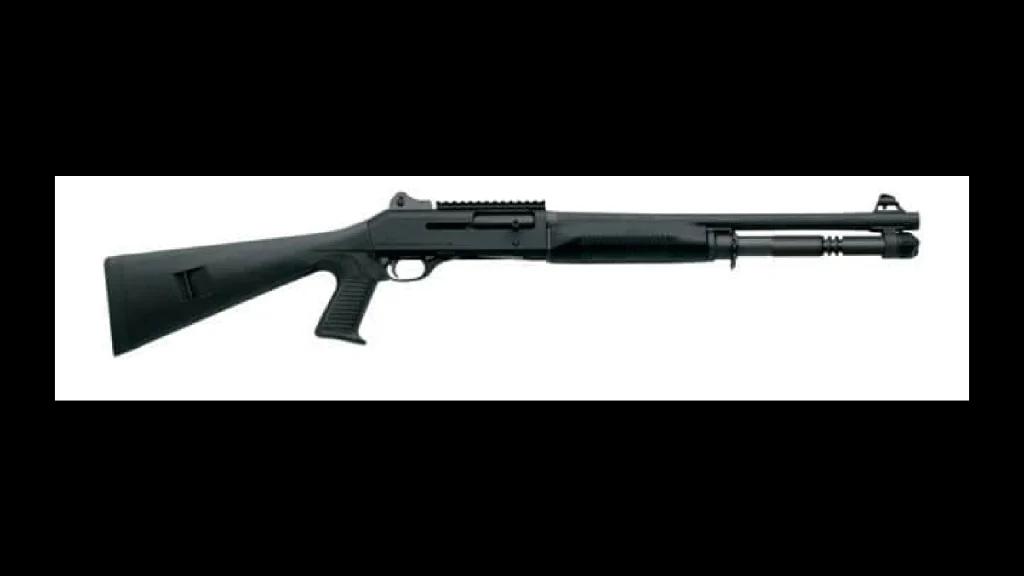
$1927.99

33
AVERAGE
2026 Awards & Rankings
Performance Scores
Benelli’s M-series shotguns date back to the mid-1980s and have evolved from the renowned HK512 FABARM.
From the inertia-driven M1 (Super 90) to the Benelli M2 and M3 evolutions, today’s Benelli M4 is for many the gold-standard for semi-auto shotguns of any stripe.
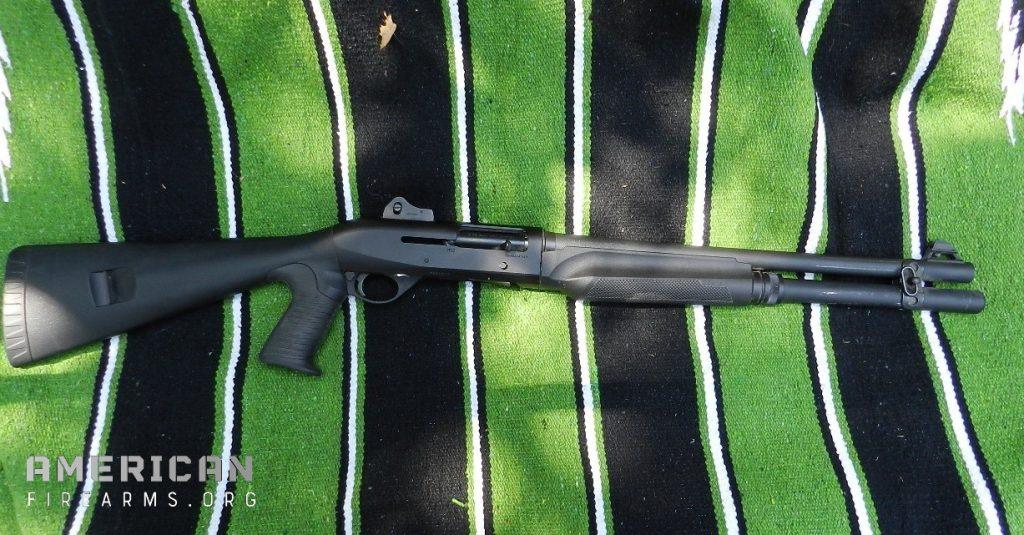
Having come out in extensive testing by the US Marine Corps in the Joint Service Combat Shotgun program to become the M1014 in military parlance, the piston-driven gas-operated M4 proved itself durable enough to survive hard use, which is quite the accomplishment for any semi-automatic shotgun.
Today, commandos and special response units worldwide use these guns, and for good reason.
On the downside, they can be a little tricky to figure out– something that can be fixed through proper training– and have a problem cycling low-powered less-lethal loads, a common issue with autoloading shotguns that use a gas-operated system.
Current production models on the commercial market run 18.5-inch barrels, come standard with ghost ring sights, a durable synthetic stock, and offer a 5+1 capacity, which can be extended when paired with a longer barrel.
If you like the performance of the M4 but are looking for a semi-auto that’s a little lighter weight, consider the Benelli M2.
Those who know, know.
3. Best Value: Black Aces Tactical SMax
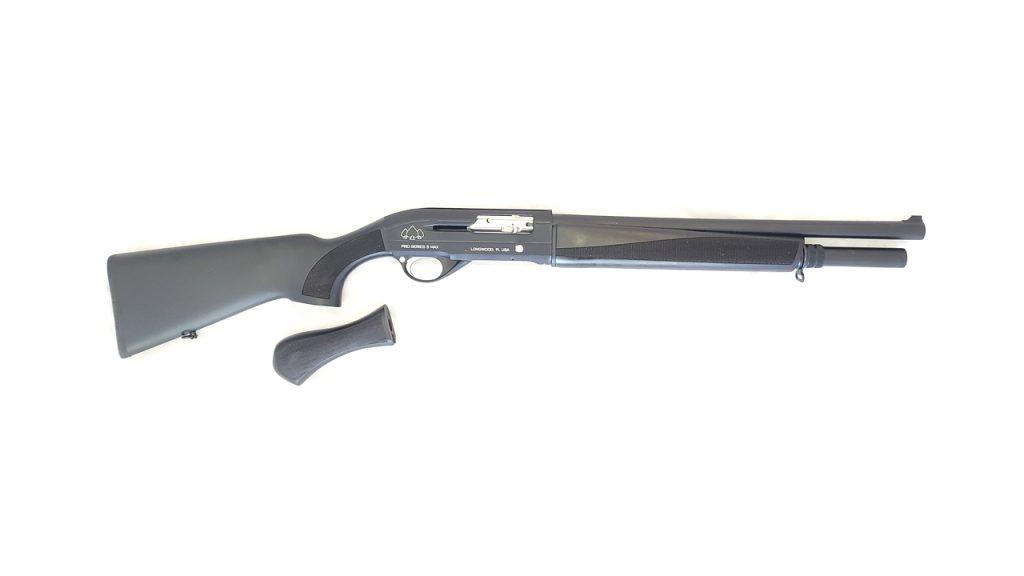

28
AVERAGE
2026 Awards & Rankings
Performance Scores
Black Aces is a newer brand in the firearms industry, and their recent Tactical Pro SMax truly checks all the boxes.
It offers rugged simplicity that borrows from almost every combat or tactical shotgun on the market today but delivers all the reliability and performance with a price that’s hard to beat.
The Pro Series SMax model, is available with black or woodgrain walnut furniture, sporting an 18.5-inch barrel length, and a corresponding 6-shot capacity.
One bonus about the SMax is that the wood furniture gives it a little more weight than synthetics, keeping the 12GA recoil under control. It also packed both a shoulder and bird’s head pistol grip in the same box — a bonus if you’re into pistol grips — and adding to its home defense capability.
Sure, Black Aces isn’t a household name, but if it isn’t broke…
4. Fastest Firing: Beretta 1301 Tactical Shotgun
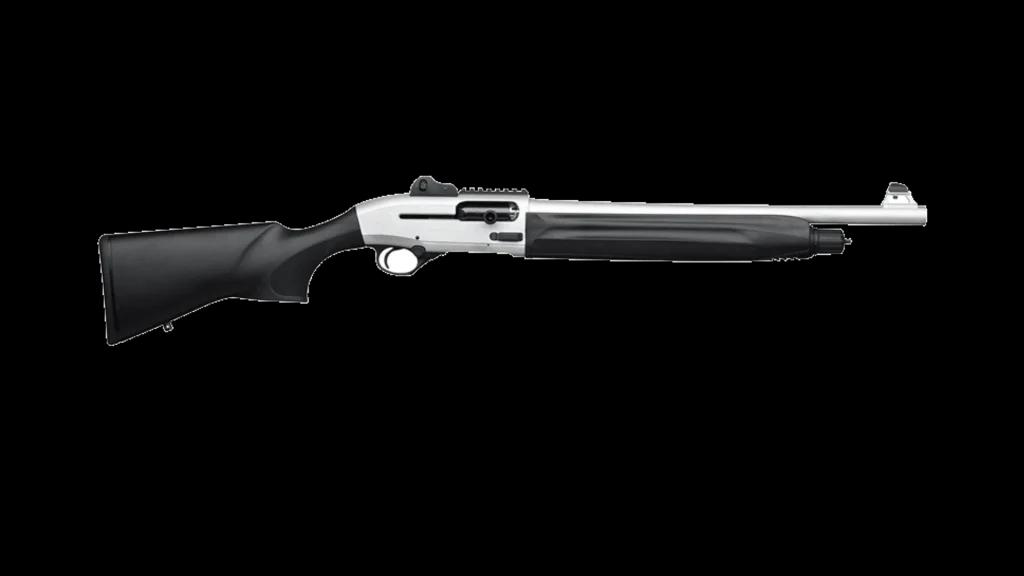
$1608.99

28
AVERAGE
2026 Awards & Rankings
Performance Scores
With a low-profile receiver based on the storied Italian gunmaker’s A400 series semi-auto shotgun action, the Beretta 1301 Tactical is both fast– billed by the company as the fastest on the market– and soft-recoiling. Like the Benelli M4, it is a modern gas-operated shotgun that utilizes a clean-shooting piston for reliability.
One downside on the 1301 is that it is just currently offered in a single model, with an 18.5-inch barrel and 4+1 capacity, although it does come standard with ghost ring sights and supersized surface controls that can really help in demanding field conditions.
5. Competition Pick: FN SLP MK I Tactical Shotgun
Introduced in 2008 the FN Self-Loading Police shotgun was billed at its debut as the world’s fastest cycling tactical shotgun.
Like the Beretta 1301 and the Benelli M4, the FLP uses an aluminum receiver to cut down on weight as well as a piston-driven gas system.
While the gun is a sleeper as FN hasn’t done a great job in letting the public know it exists, make no mistake, it is an exceptional 12 gauge that has been showing up increasingly in 3-gun practical/tactical shoots. Importantly, the standard 22-inch barrel format SLP MK I comes standard with an extended 8+1 capacity which is downsized to 6+1 on the 18-inch models. for home defense applications.
For those who are looking for a pistol grip tactical shotgun, the FN SLP Tactical model is the ticket.
6. Budget Pick: Mossberg Maverick 88
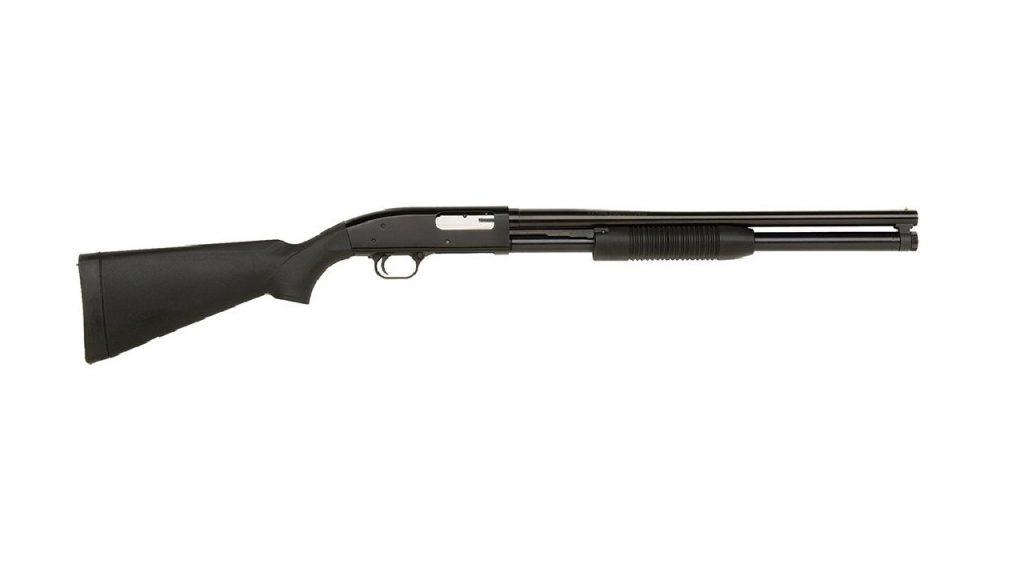
$309.99

29
AVERAGE
2026 Awards & Rankings
Performance Scores
You’ll find Mossberg shotguns on any list trying to define the best tactical shotgun for a reason – they’re proven products backed by the military and LE forces around the globe.
The Maverick 88 while not the mil-spec behemoth the Mossberg 500 is (it has a thinner barrel wall, no heat shroud, and uses a lot of polymer parts, which helps keep the cost down) this pump-action, 12-gauge shotgun is incredibly easy to use and has an accessory pool many of the other scatterguns on this list would envy. In terms of a budget shotgun for home defense, the Mossberg Maverick 88 is hard to beat. For an even more paired-down version check out the Mossberg Maverick 88 Security.
Plus it can be found for about half the price of a Mossberg 500.
7. Also Great: Remington 870
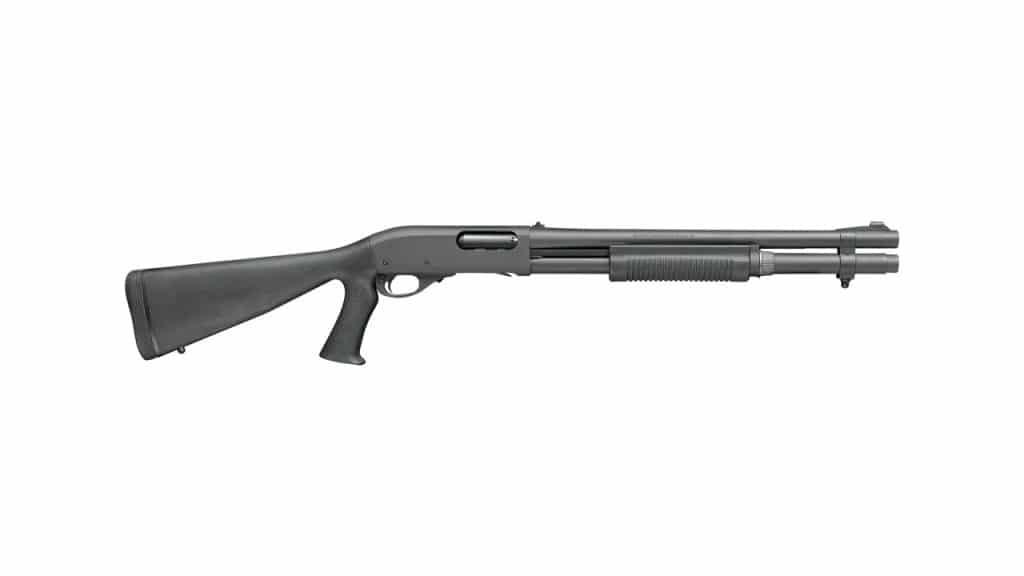

39
AVERAGE
2026 Awards & Rankings
Performance Scores
With more than 12 million made over the years, Remington says their Model 870 is the most prolific shotgun in history, and for many the best pump action shotgun of all time.
Of course, the bulk of those made was for the hunting and sporting markets, but it is safe to say there are probably a million or more 870 Police Magnum or equivalent 870P and 870 MCS models floating around – these guns have been a staple in both military and law enforcement use for generations.
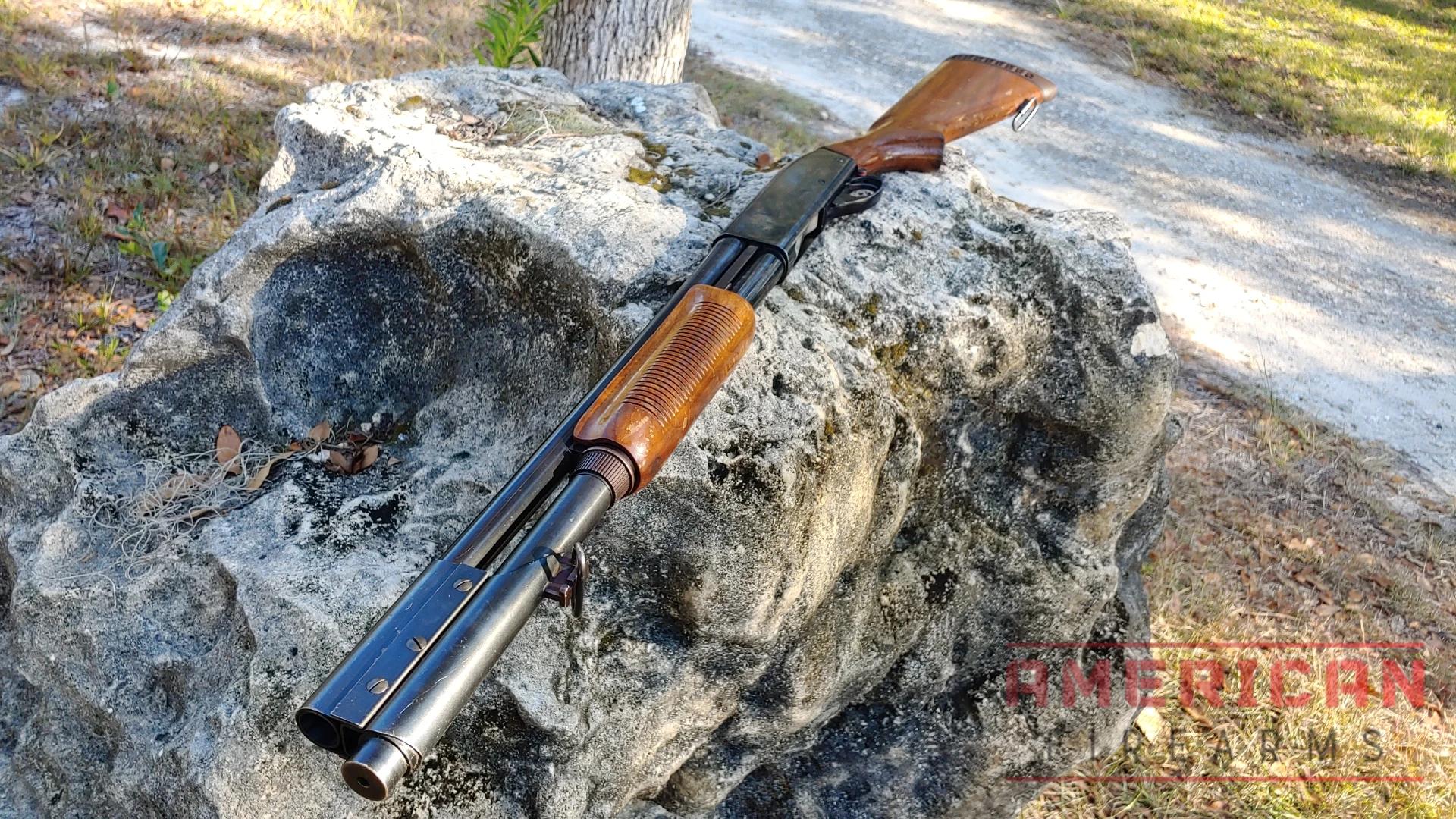
Intended to meet tough demands, they typically utilize a more rugged all-metal trigger group, fewer MIM parts, and were produced with an extensive QC process.
The only problem is that these guns are often just sold through government channels but a good substitute more commonly available on the commercial market is the 870 Express Tactical, which includes a 6+1 round capacity, comes in at 38.5 inches in overall length and weighs 7.5 pounds.
Want more on the 870? Check out our hands-on review.
8. Best Tactical “Firearm”: Remington Tac-14
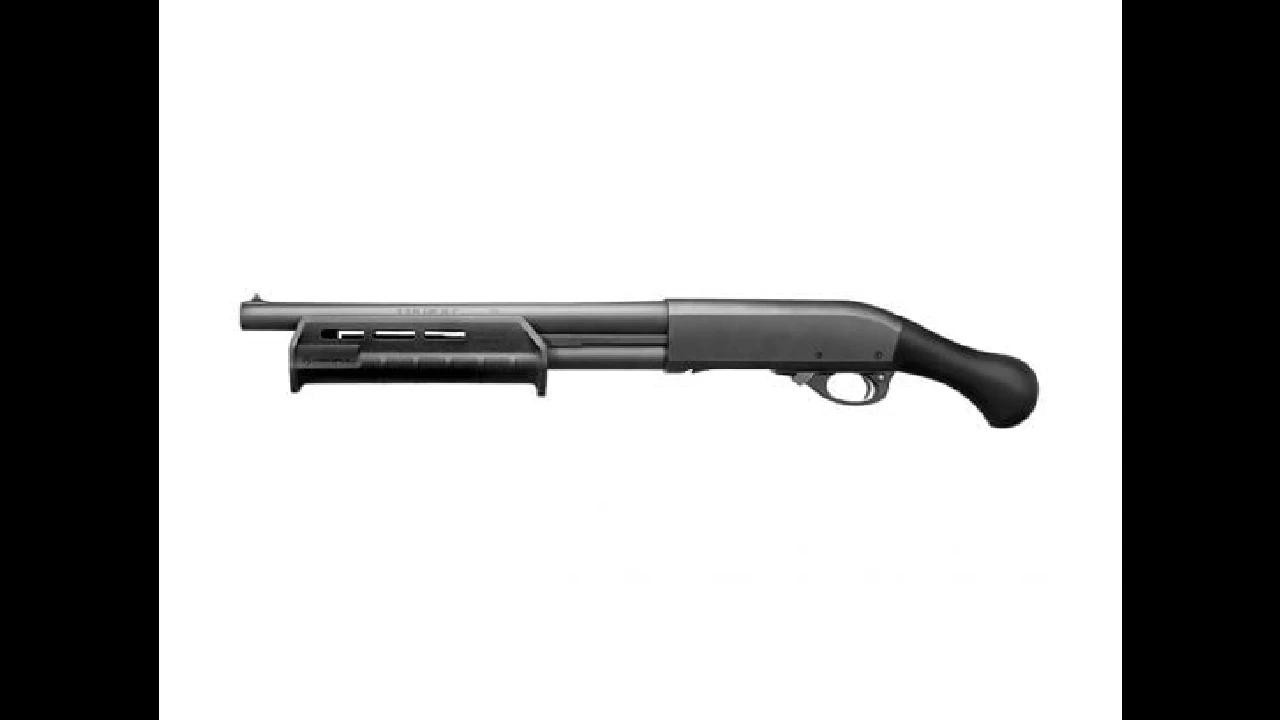

28
AVERAGE
2026 Awards & Rankings
Performance Scores
The Good
- Makes a great home defense option or a range toy
- A lot of fun to shoot
- Less painful to shoot than a standard PGO shotgun
- Sturdy with classic Rem 870 feel
- Easy accessory attachment
- Will run anything (except 1.75-inch mini shells)
The Bad
- Niche when it comes to a 12 or 20-gauge firearm
- Not seriously capable of using in competition, clay shooting, or hunting
- Not for beginners
- Fore-end is too smooth
- Standard shotguns may be a better option for home defense
- No optics support
Specs
- Caliber: 12 or 20 gauge
- Barrel Length: 14 inches
- Overall Length: 26.3 inches
- Weight: 5.5 ounces, unloaded
- Magazine Capacity: 4+1
Do not call it a shotgun, the Tac-14 is a lot of fun on the range and very handy coming down a hallway.
History
A kind of low-key NFA-compliant version of the old WITSEC style 870 SBS (and Remington’s answer to the Mossberg Shockwave series, Big Green introduced the Tac-14 in 2017. Its name came from its 14-inch barrel and its tactical styling.
What makes what would otherwise be a shotgun a “firearm”? 26 inches or less in overall length, smoothbores, shotshell caliber chambering, no stock. In fact, these firearms have never had a stock or they would be classified as shotguns.
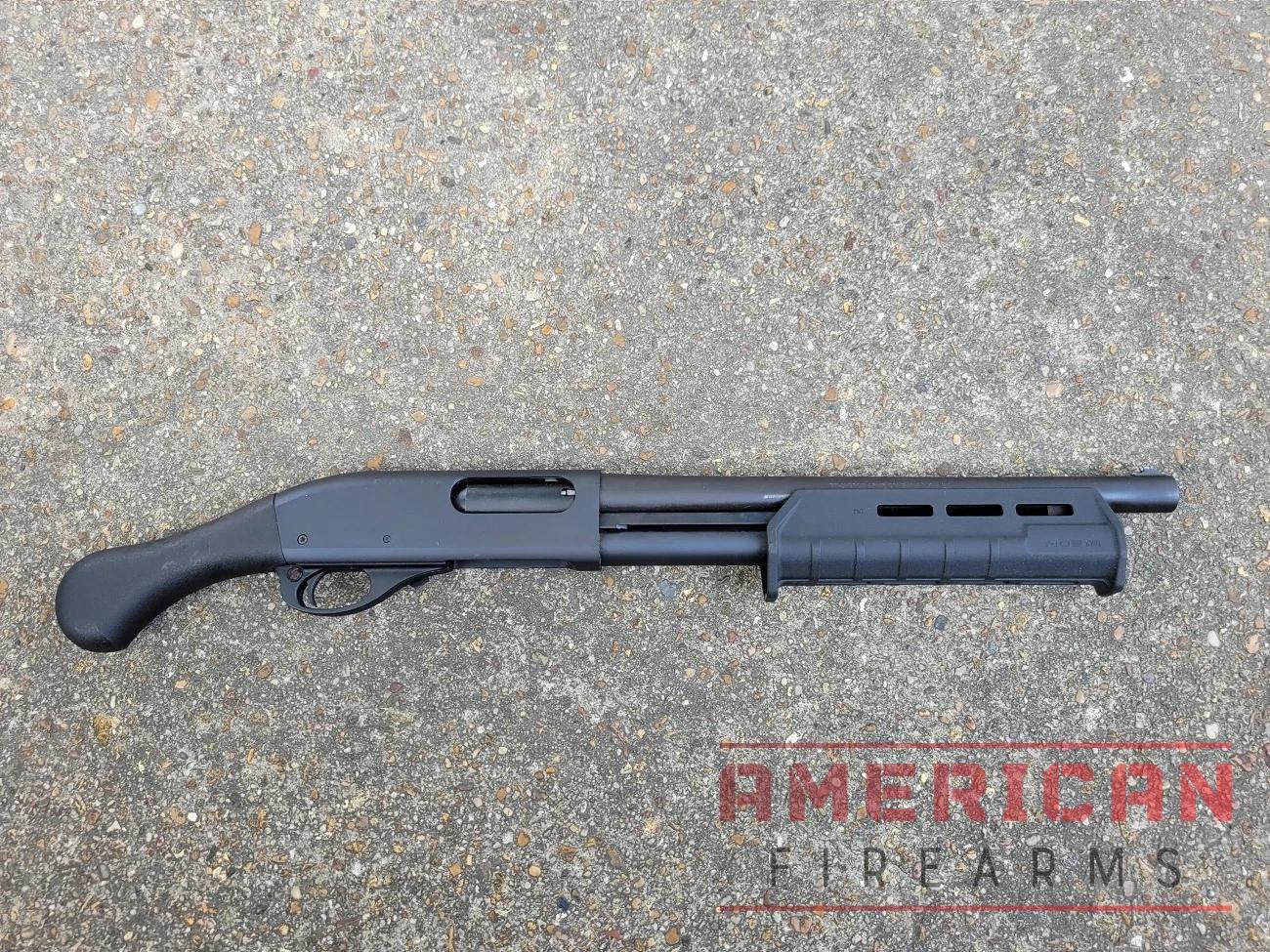
Features
Not technically a shotgun by ATF definition to avoid the NFA designation of an SBS, this 12 or 20-gauge “firearm” runs a 2.75-inch. chamber, 14-inch cylinder bore barrel with a braised front bead sight and features a short Shockwave Raptor pistol grip stock and a Magpul forend. Other than that, it uses a Remington 870-style receiver and pump action.
RemArms (who replaced Remington in 2020) has put the Tac-14 back into production in both the Magpul fore-end/Raptor grip standard model as well as a new Hardwood model that includes a walnut corncob that resembles the one used on the 870 Police back in the 1980s and a matching wooden Raptor grip.
The Hardwood typically runs about $50-$75 more and seems to be tougher to find. Sadly, they do not currently offer an all-stainless Marine model.
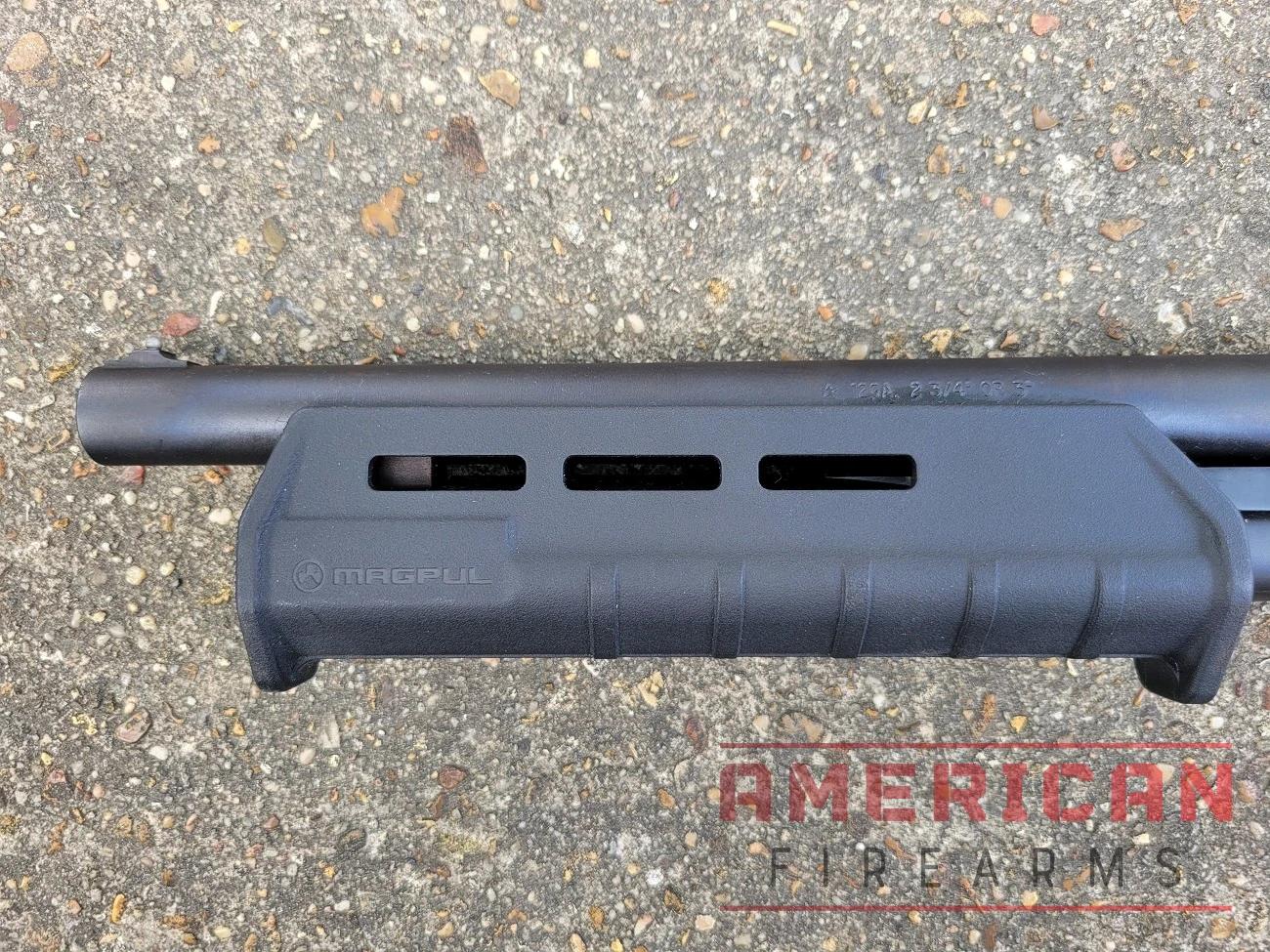
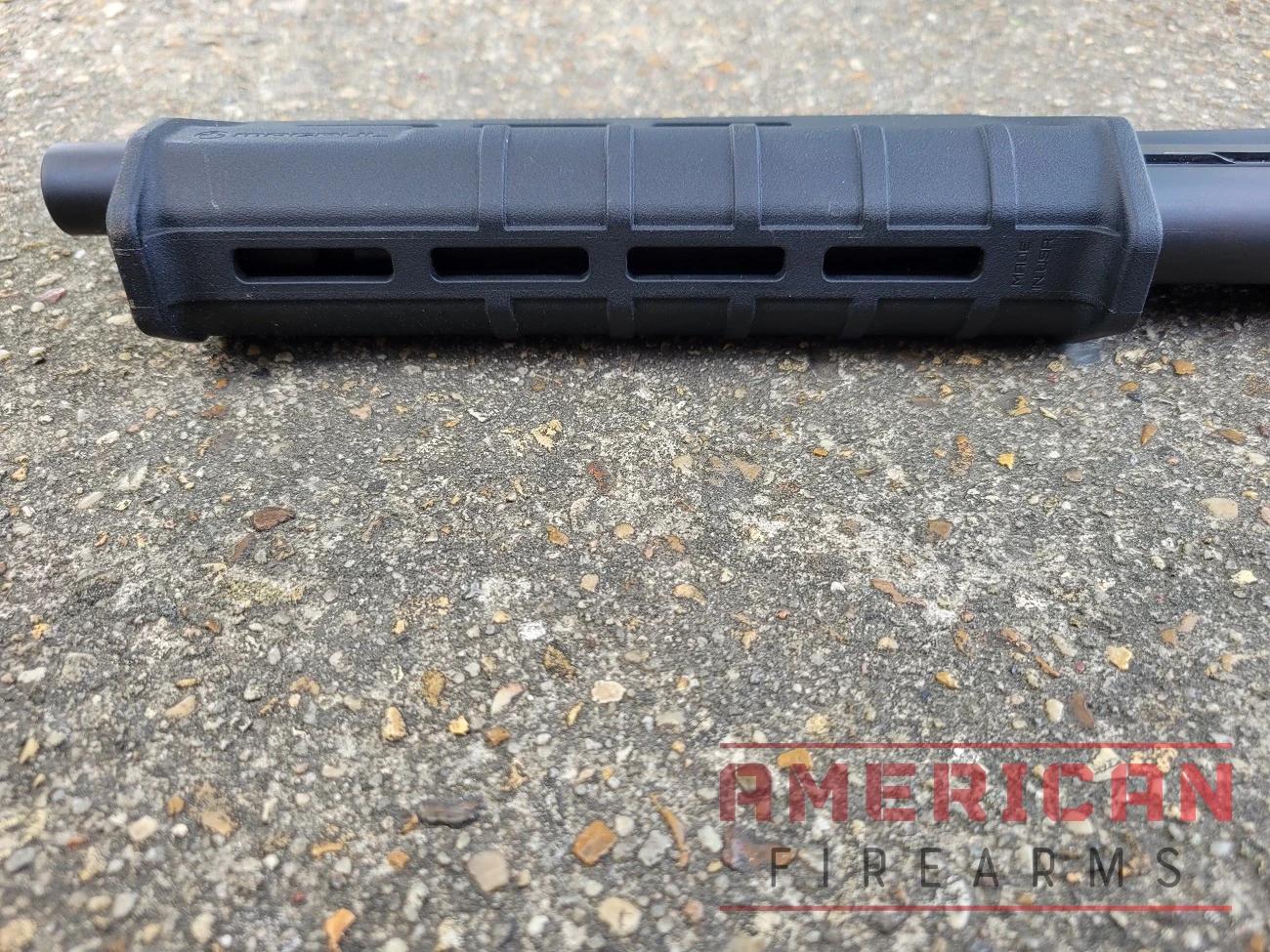
Controls
These are a carbon copy of the standard 870 to include a straightforward pump action that works as advertised and runs smooth with the classic 870 slide feel.
The straightforward push-button cross-bolt manual safety at the rear of the trigger guard is about as standard as they come and a slide release just forward of the guard.
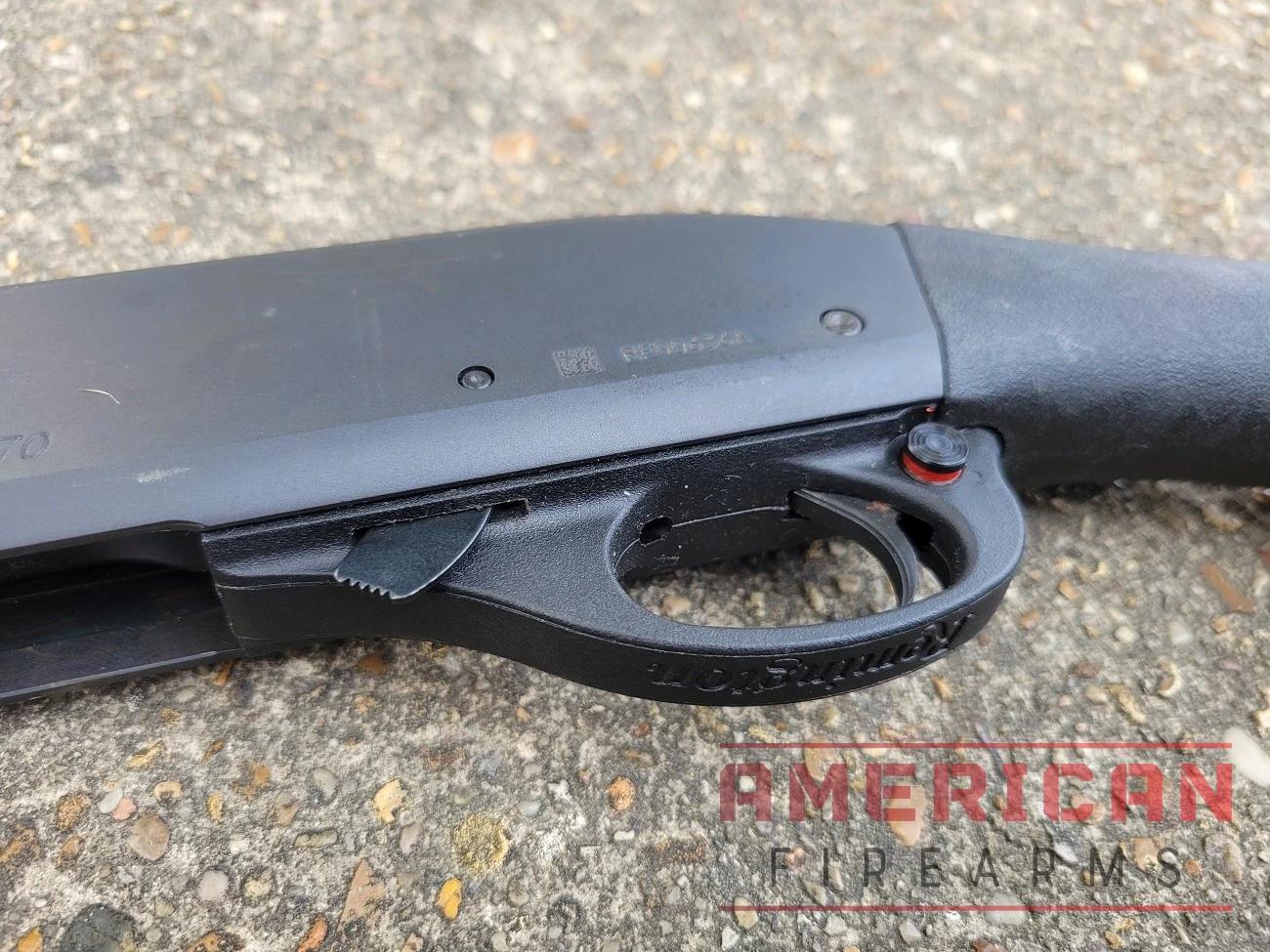
Ergonomics
870s, in general, are made for ambidextrous use, being bottom loaded with a centerline pump and controls mounted on the trigger guard. However, despite tipping the scales at a very compact five and half pounds (5.65 to be exact), when loaded with full-power 3-inch shells, it’s hard to control and will put the hammer to your wrist.
Stick to low recoil loads if possible.
The Magpul for-end offers a lot of functionality but requires careful manipulation — especially if firing quickly. You’re not working with a stock to help brace the firearm, which means there’s a lot of pressure up front and not a lot of barrel.
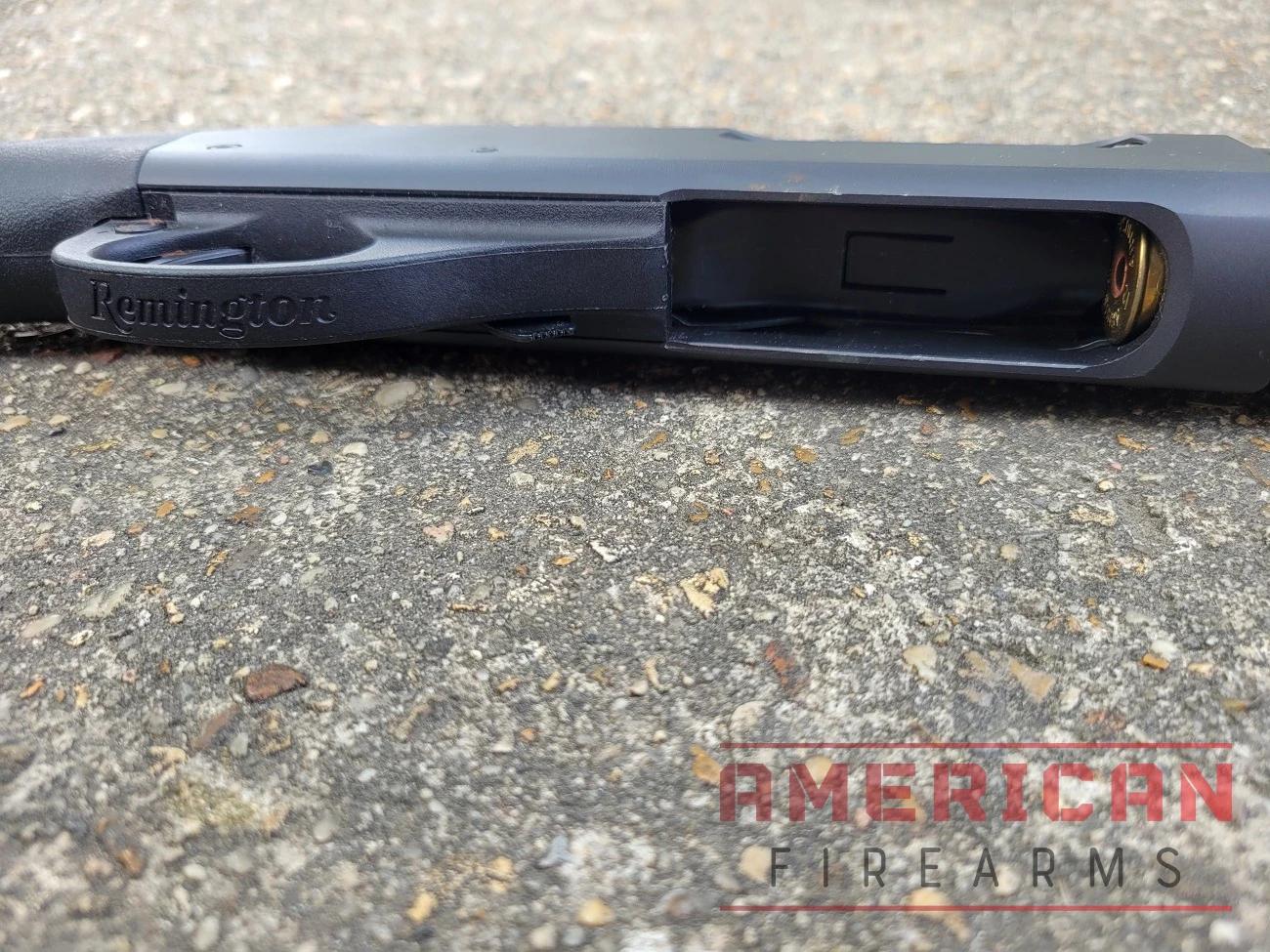
Reliability
I found the Tac-14 in 12 gauge to run with just about every standard style of shotgun shell ranging from birdshot to 00 buck and solid slug. It’s an 870 through-and-through. It will not run, however, with short 1.75-inch mini shells.
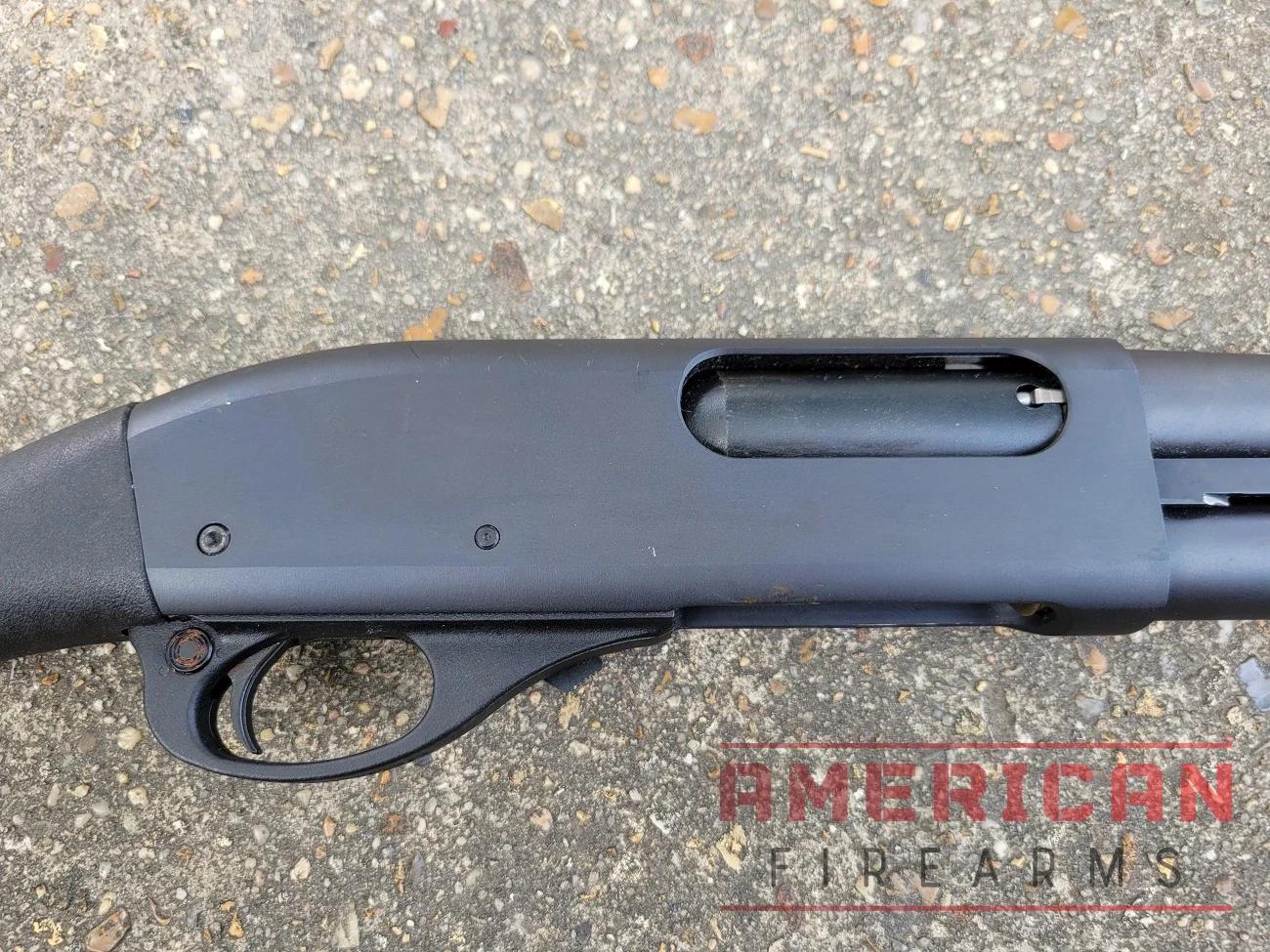
Sights
There is no rear sight, only a front bead, leaving the Tac-14 as a fairly basic short-range firearm. Given the focus on home defense/limited range, this seems like a potential miss from Big Green. A red dot optic would add capability and a touch of range — and the bead sight gets tough to see when the lights go out.
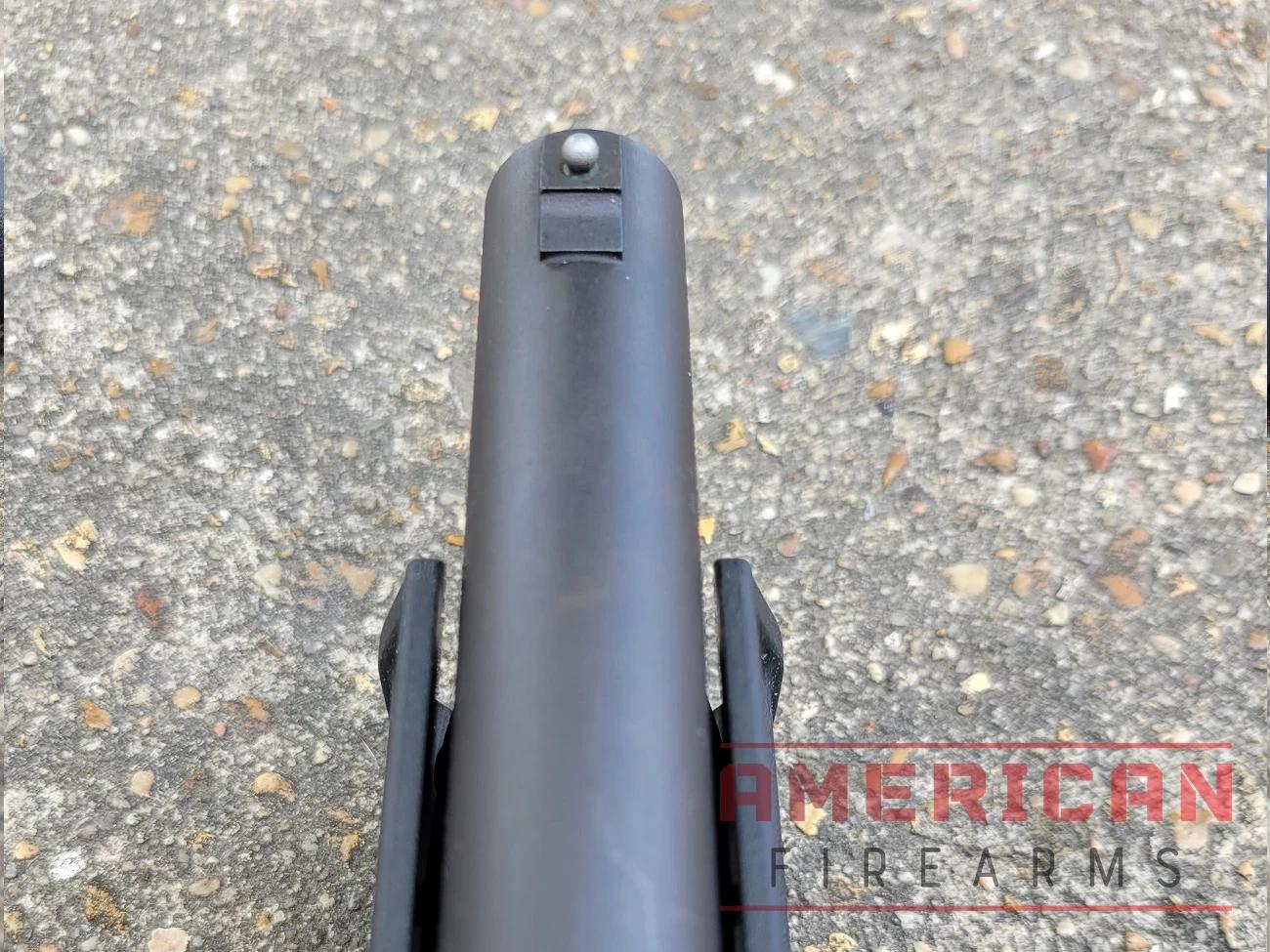
Trigger
The trigger has about a 4.5-pound weight and broke clean, feeling very much like that found on the standard 870.
Accuracy
My Tac-14 is brutally effective on target at ranges out to 15 yards, typically still keeping all nine 00 buck pellets on a 10-inch target. Despite what you may think, the shorter barrel doesn’t impact spread — that’s determined by load and choke — and the cylinder choke on the Tac-14 produces very predictable patterns over and over again.
Aftermarket Support
Most 870 accessories work with the Tac-14 but be careful when it comes to adding a stock so that you don’t stray into NFA territory.
Buyers Guide
While the muzzle-stuffer double barrels of the 19th Century along with the 20th Century’s reciprocating barrel autoloaders and single-bar pumps had their moment in the sun, today their technology is dated.
While it can work in a pinch, should you need a self defense shotgun to bet your life or the life of those in your home on, you want to be on the cutting edge of lessons learned from past designs.
At the same time, you want to know that it is a proven design that has been in the trenches, so to speak, and come back the better for it. High capacity, a Picatinny rail, and the best front sight in the world won’t mean a thing without reliability you can count on. Here are some guidelines to look for:
1. Name recognition
Now don’t get us wrong, this is not an issue of gun snobbery or being down on “the poors.”
This is basic home defense weapon logic. Established shotgun makers that have been around for decades build upon designs they already have on the shelf to make a progressively better product.
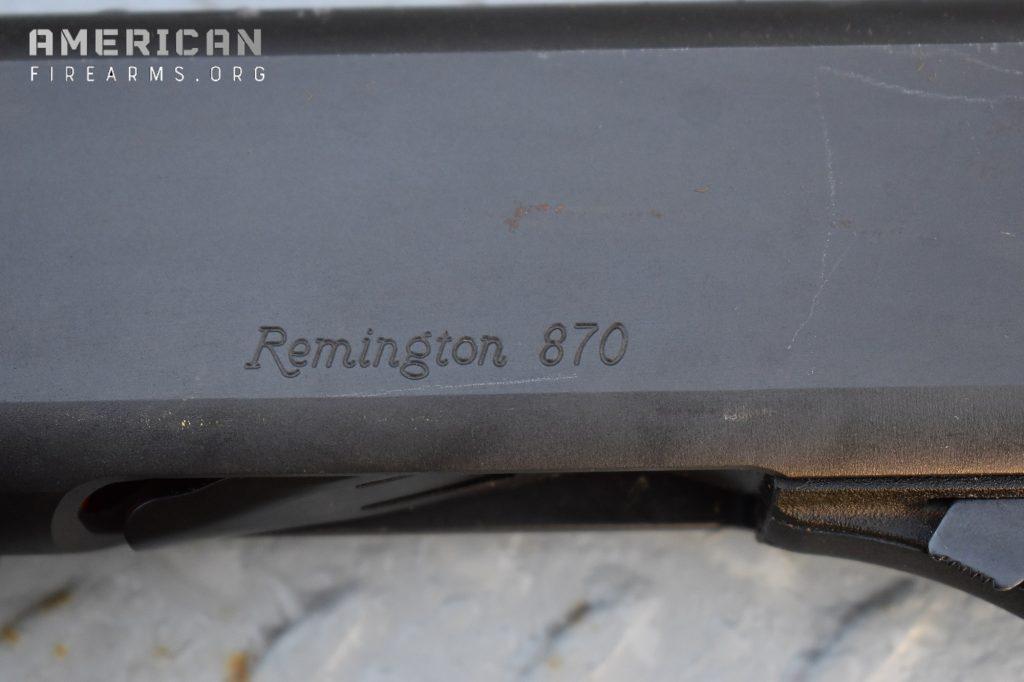
If a company has made millions of firearms, no matter how well-built, they have had the benefit of seeing hundreds of those come back into the factory for warranty and repair work.
This byproduct is priceless for R&D – as in-house engineers take that direct feedback and use it to figure out what went wrong and how to fix it, so it doesn’t keep happening in critical self-defense situations (or any, for that matter.).
R&D investment & feedback
If a fix is big enough, it can revolutionize the process and lead to entirely new models. This is what makes companies like Beretta, Benelli, FN, Mossberg, Remington, Saiga, and Winchester something to seek out rather than choose a no-name clone of one of their shotguns made in China, Turkey or elsewhere that has just been reverse-engineered.
The cloners do not sink money into research and development. Instead, they look at a great gun, with patents often just out of copyright, and crank out a reasonable facsimile – with price in mind rather than quality – so they can be competitive with the original shotgun’s improved descendants hoping people will say it is “just as good.”
It isn’t.
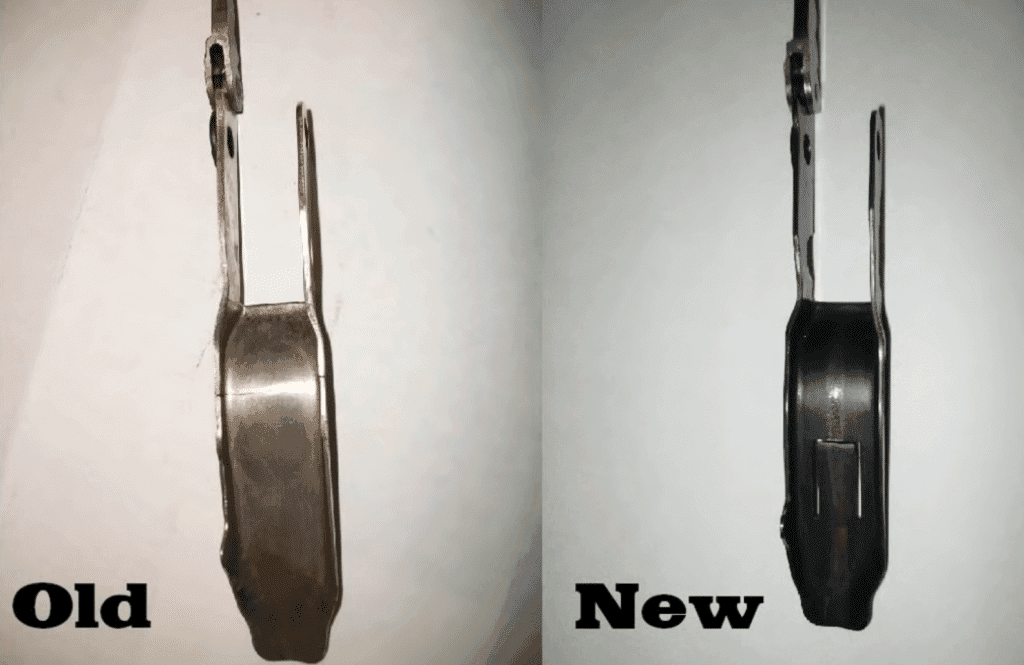
For instance, copies of the Remington 870 made overseas often employ an outdated shell carrier design prone to jamming due to short stroking.
Meanwhile, responding to such complaints, Remington updated their carriers way back in 1984 to eliminate the issue.
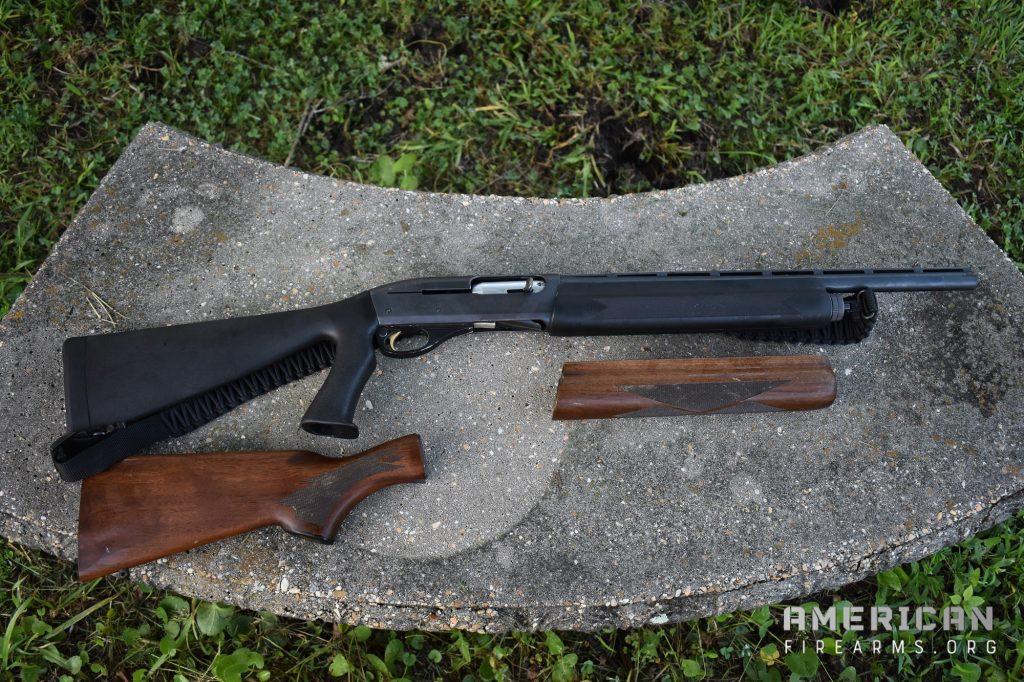
2. Magazine capacity
Since the era of the Winchester ’97 trench guns, the standard for a tactical shotgun has been a tubular magazine that can hold at least five shells, plus one in the chamber.
Guns with a lower capacity, often holding only two or three shells, are typically marketed for field activities like upland bird or deer hunting.
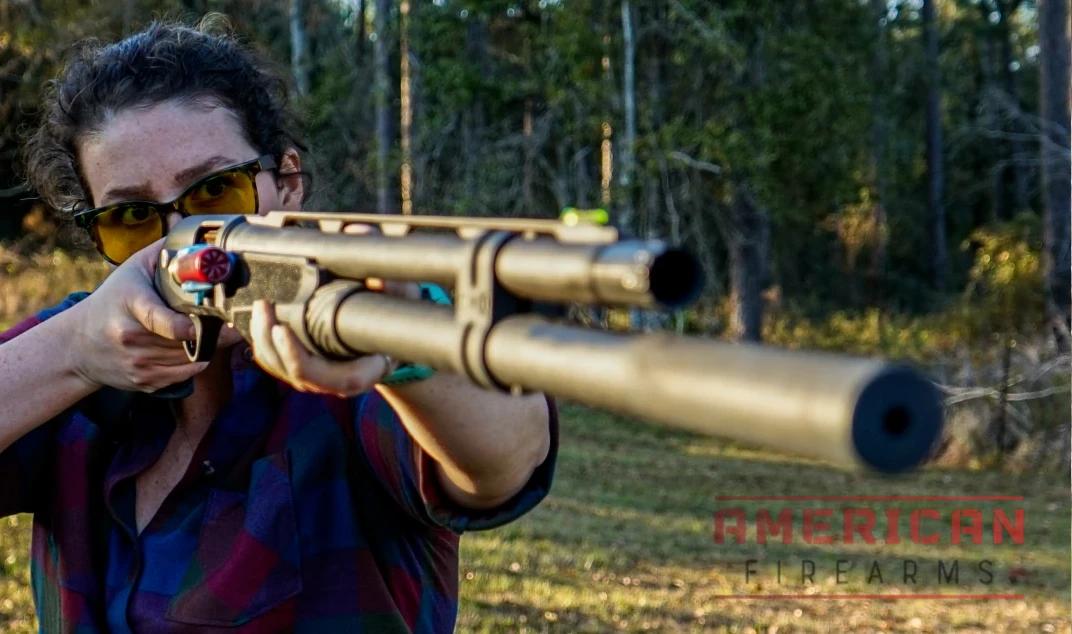
While they often utilize a version of the action as the same company’s other offerings marketed to home defense or LE use, and their magazine tubes can be modified with aftermarket kits, the investment in time, money, and effort to do this begs the question of why not opt for the tactical shotgun right off the bat.
More pow with no additional length
Many of today’s better offerings, such as the Mossberg 590, tend to come with a 7+1 or 8+1 capacity without adding length to the gun. For those who prefer a quicker reload or extended capacity, several reputable companies market proven shotgun designs that incorporate detachable box magazines.
Keep in mind, however, that some of the longer mags can be unwieldy to use in practice, which in turn requires more training to master efficiently.
3. Reliably built for hard use
This goes hand in hand with a company’s reputation.
For instance, the Mossberg 500 series and the Remington 870 series, two of the most popular shotguns in regular police and military use, have both existed for over 60 years.
They are featured in our guide to the best pump shotguns and are suitable candidates for shotgun suppressors.
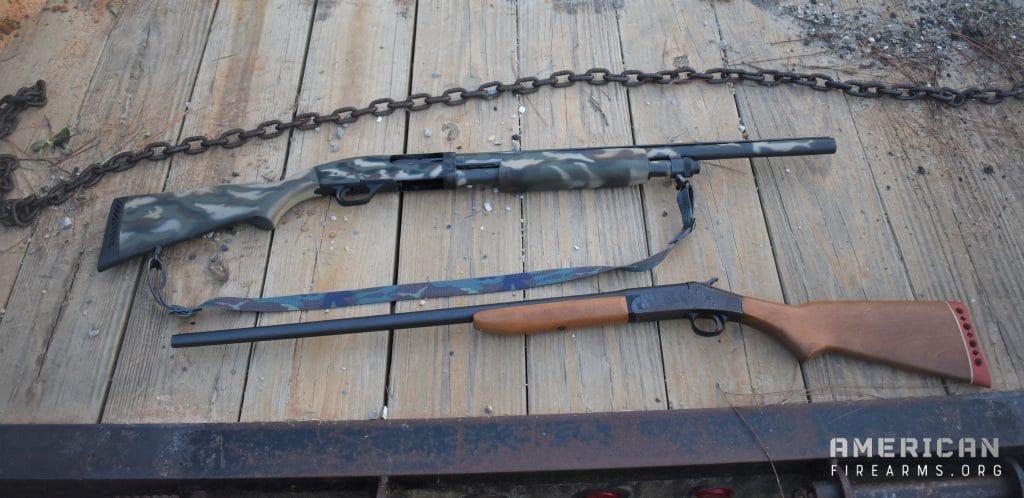
Both are remarkably similar in layout, being bottom-loading and side-ejecting fed via a pump-action running on dual-action bars from an under-barrel tubular magazine.
It seems straightforward, doesn’t it? However, it’s essential not to mistake the basic models of these guns with those designed for rigorous use in challenging conditions.
4. Durable materials
Tactical shotguns typically use more robust materials, replacing aluminum and plastic components with steel, unlike their sporting counterparts from the same manufacturer.
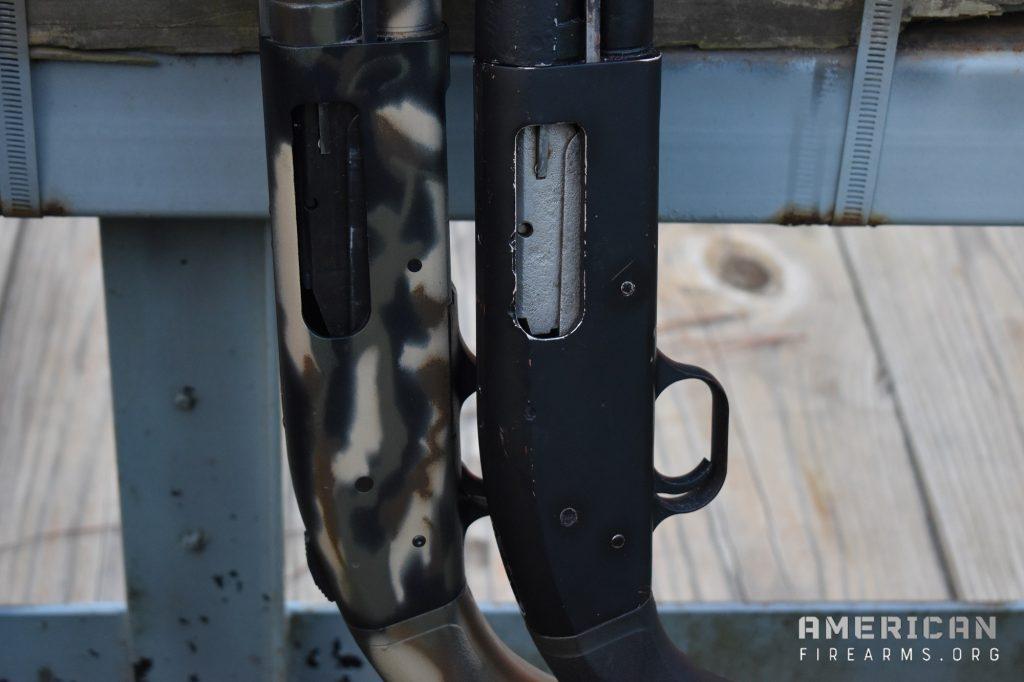
For instance, compare the Maverick 88, which is built by Mossberg as a basic general-purpose shotgun, to Mossberg’s 590A1, the latter intended for the tactical market.
While both have a 500-style action, the 590A1 is built to MilSpec standards with a heavy-walled barrel and parkerized finish along with a metal trigger and cross bolt safety button as it is designed for military end-users.
Not to throw stones at the Maverick, which is still a decent self-defense shotgun and affordably priced but it has a thinner barrel, lots of polymer, and a synthetic stock to help keep those prices down.
You can do the same comparison with a Remington 870 Express and an 870P/Police Magnum.
5. Endorsement
The genuine testament to a combat or tactical shotgun’s excellence is evident in its user base.
Now I am not talking about the full-throated endorsement of a particular shotgun by random YouTube personalities, exhibition shooters, and gaming girls, or a gun’s appearance in a video game franchise, TV show, or big-budget action film.
Instead, I mean looking at who is paying to use the gun, rather than those who are being paid to be seen using the gun.
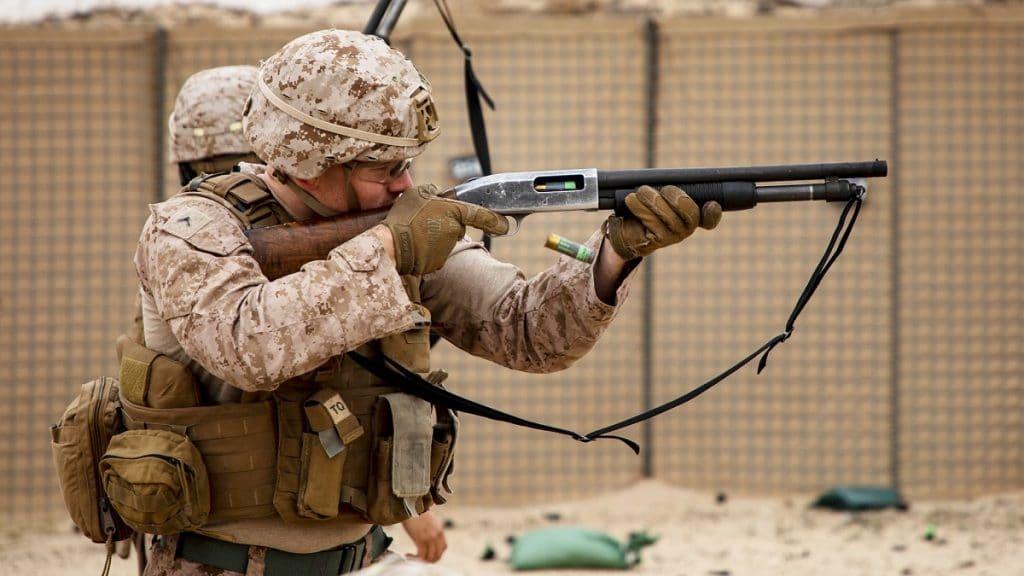
Respectable military and LE end-users will vet their arms to ensure they first meet their standards and subsequently fit their budget.
This usually means grueling field testing, trials, and evaluation periods conducted by an array of highly qualified subject matter experts often with decades of first-hand experience.
The adoption by those agencies and services after such T&E is the quiet endorsement that matters.
Why a Tactical Shotgun
Home Defense
The obvious use for a tactical shotgun is for close-quarters, high-pressure applications such as military, police, and home-defense work.
With some training and practice, tactical shotguns can be some of the best defensive or offensive tools at short to medium ranges.
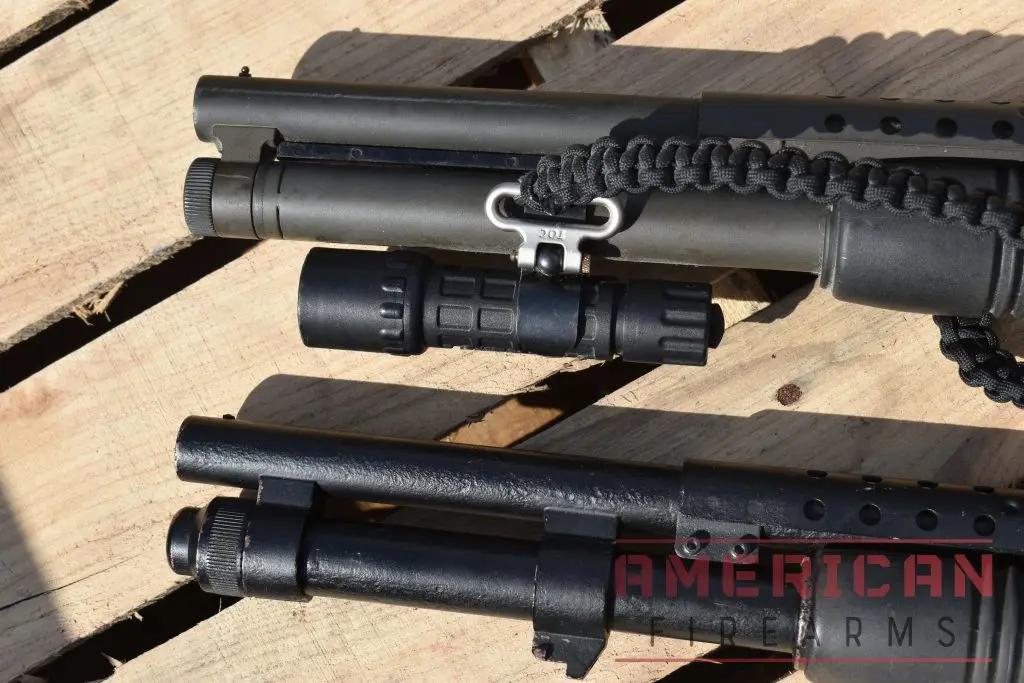
In an era where many are focused on ARs and handguns for defense, a well-equipped tactical shotgun, in the hands of someone trained, remains a top choice for home defense. This is largely due to the versatility in ammunition choices.
Selecting a tactical shotgun for home defense can be an excellent choice.
Sporting
The versatility these shotguns offer means your tactical shotgun can also be pressed into many sporting roles typically reserved for a double barrel or over/under.
For example, a tactical pump-action shotgun can also be used as a more than good deer gun when loaded with buckshot or slugs. Similarly, a semi-automatic tactical shotgun would be a more than adequate bird hunting shotgun when loaded with birdshot.
Labeling a shotgun as “tactical” often stems more from marketing language or the inclusion of features like a pistol grip and rails, rather than a distinct set of characteristics.
Thus, a tactical shotgun can be as versatile as any other shotgun.
Types of Tactical Shotguns
Here, we’ll divide up tactical shotguns into two types based on their actions, giving the pros, cons, and best uses of both types.
Pump Action
Many tactical shotguns are pump action, owing to the reliability of this operating system. This means that they feed from a magazine tube below the barrel, and to load a round into the chamber, you have to work the slide manually.
There are two major pros to this. First and foremost, this is a highly reliable way to ensure that a firearm loads: the primary moving part here is your hand, and as long as that’s operable and you have ammunition, you’ll be able to stay in the fight.
Second, pump actions do not rely on recoil to cycle the action and thus can use nearly any ammunition that you can manage to put down the magazine tube.
The major drawback of pump-action shotguns for some is their firing speed.
It takes thousands of rounds of training to get fast with a pump, and even then it remains challenging to get multiple shots on target quickly vs. a semi-auto. Despite being a little slower than semi-automatics, we love a pump shotgun as a tactical choice because they are so reliable.
Semi-Automatic
Additionally, an increasing number of tactical shotguns are semi-automatic, eliminating the need for manual cycling to load the next round.
There are some significant benefits to this. First and foremost is speed: a semi-automatic shotgun will almost always be faster than a pump-action one in terms of sheer rate of fire.
Second, using semi-automatic shotguns with one hand is possible, assuming you can tame the recoil.
With that speed does come some sacrifice in reliability. Although many shotguns are getting better over the years because semi-automatics rely on recoil or gasses to cycle the action and load another round, lower-powered ammunition such as birdshot or mini-shells might cause failures to eject and feed.
With that said, we think that a semi-automatic shotgun with buckshot or slugs is one of the premier defensive tools available, be it a bullpup shotgun or standard configuration.
It’s important to mention that these are broad generalizations, and there are exceptions to these two categories.
For instance, the SPAS-12 can be fired either as a pump-action or semi-automatic: we’d classify it as a semi-automatic with the ability to be used as a pump-action in an emergency, and most shotguns are one type or the other.
Tactical Shotgun Pricing
- Under $500. For less than $500, it is sometimes possible to get an excellent tactical shotgun. For instance, one of our writers managed to snag a Mossberg 590A1 for about $450, new in box, but sold as “used” because the guy who had bought it thought it was 20 gauge instead of 12, and thus sold it back to the store. These gun deals are rare but can be found, and in this range, you’ll be looking at mostly pump shotguns.
- $500-$1,000. For around $1,000, you’ll be able to find most types of pump shotguns, and the semi-automatic models from some manufacturers: all of them will likely come kitted out with quality furniture but are unlikely to come with optics or any accessories. You can even find proven bullpup designs in this range like the Kel Tec KSG — one of our favorite bullpups.
- $2,000 & Above. At the $2,000 mark, you’ll be buying whatever you like in the shotgun market, and might be able to find the venerated Benelli M4 all set up and ready to go for whatever tactical purposes you have in mind. At this price range, you may also be able to get pre-set-up shotguns that come with premium furniture and an optic, depending on what dealers are willing to put together as bundles.
History of Tactical Shotguns
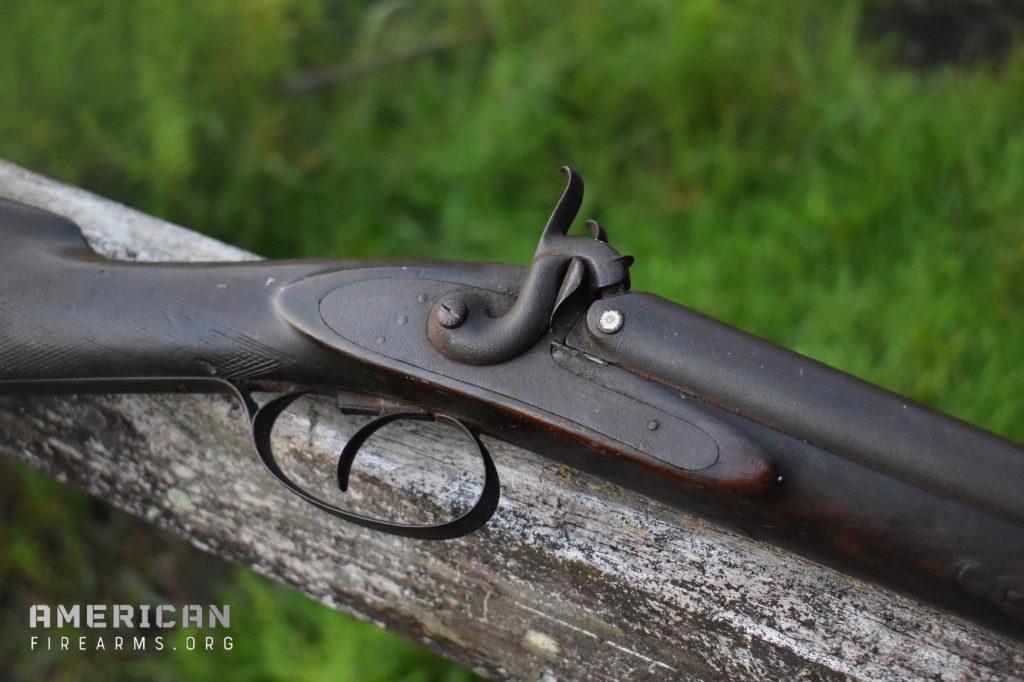
Originating from the early muzzle-loading “handgonnes” of the 12th Century, which functioned like portable cannons filled with various projectiles, shotguns were designed to scatter a range of shot downrange.
Enter firelock, flintlock, and percussion muskets
Later developments in firearm technology brought firelock, mechanical lock, flintlock, and percussion-fired muskets that, like the handgonne of old, could be filled with a handful of lead shot of various sizes.
Make no mistake, while these long arms could be used as fowling pieces to put meat on the table, they were also used widely in both personal defense and warfare, filled with “buck and ball” loads that saw combat in the Revolutionary War and Civil War.
By the 1870s, dedicated breechloading shotguns with loaded paper- or brass-hulled shells were on the market and still used for security and law enforcement, with many an Old Western sheriff carrying one in their gun rack.
The Winchester 1897 breaks all the rules
Fast forward to 1899 and the early John Browning-developed pump-action shotgun of the day, the Winchester 1897, became the first modern combat shotgun used by the U.S. military in an effort to stem brutal attacks from rebels in the Philippines.
Since then– despite the advent of tanks, guided missiles, and laser dazzlers– American fighting men have continued to use increasingly advanced shotguns to augment their arsenal.
Similarly, while today’s law enforcement has tools like tasers, chemical sprays, and acoustic disruptors, a reliable tactical shotgun remains a common choice.
The more things change, right?
How we selected these products
While I’d love to test every tactical shotgun, challenges like availability, cost, or limited resources sometimes prevent hands-on evaluations of all potential options.
Rather than present a never-ending list of all the tactical shotguns on the planet, we selected those that we felt best represent the price points laid out above — giving you a solid representational list to serve as a jumping-off point for your own research (you are going to do you own research, right?)
To avoid disappointment or steering you in the wrong direction, we bolster our own experience with conversations with experts, comb through reviews on retailer sites & sales data, review industry publications, other blogs, and otherwise surface the best information available.
We aim for all thriller, no filler, as they say.
Wrapping it up
Each of these tactical shotguns offers gun owners a variety of different combat-ready features and met the requirements of the role they were designed for and met the criteria for any firearm we’d recommend:
- Stable shooting platform
- Comfortable to use
- Purposeful, quality design
- Durable
There are quite a few options out in this category, but we hope this article steers you in the right direction. If you have any questions or feedback please drop us a line.
If you’re in the market for a firearm you might want to take a look at our guides to Handguns for Beginners, gun safes, holsters, and the best places to buy guns or ammo online.
More Reading
- Springfield Museum, Remington 870 Police
- Synchronizor, Much Ado About Shell Carriers
Updated
May 14, 2023 — After far too much fun at the range we added the (totally not a shotgun) Rem Tac-14 “firearm” to this list. It’s a blast to shoot and can clear a hallway like a boss. The Mossberg M590 Tactical also tops our list this year.
Sign up for our newsletter
Get discounts from top brands and our latest reviews!




